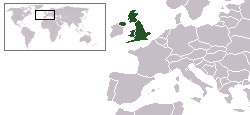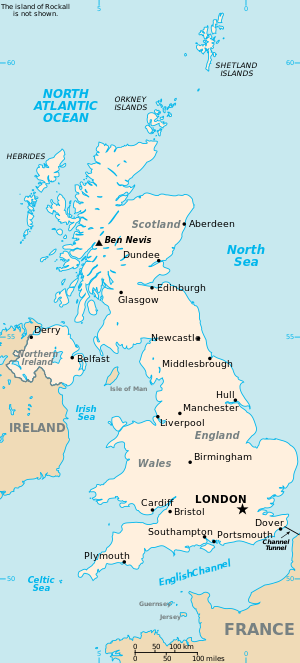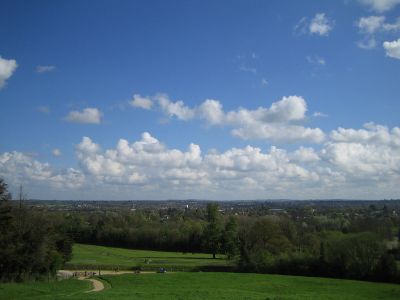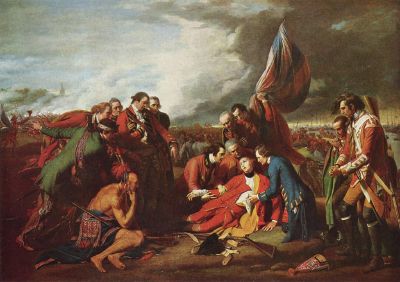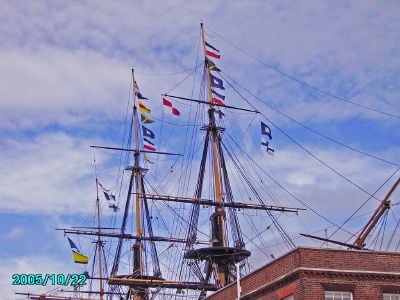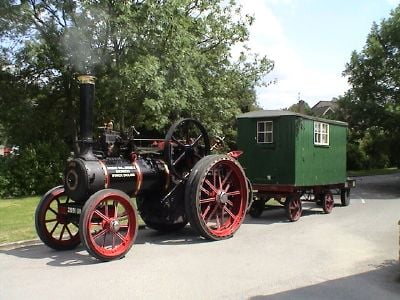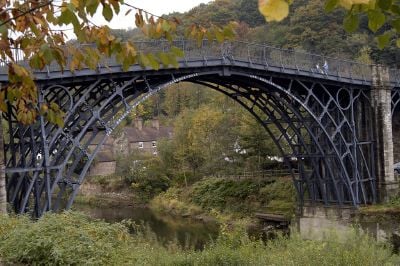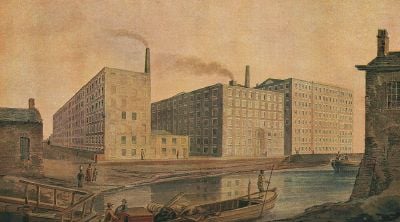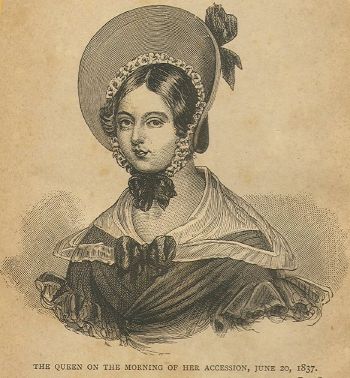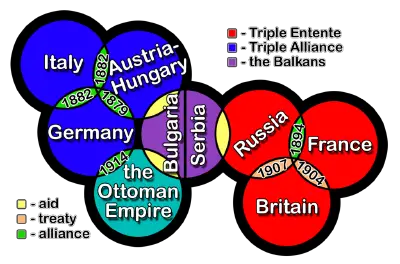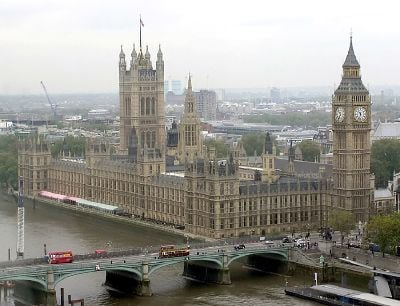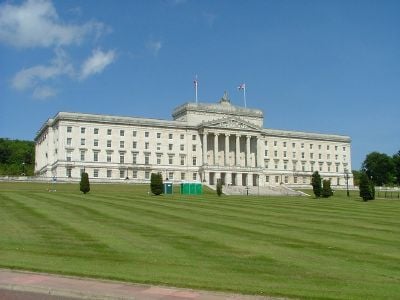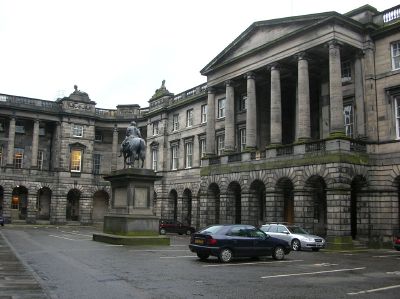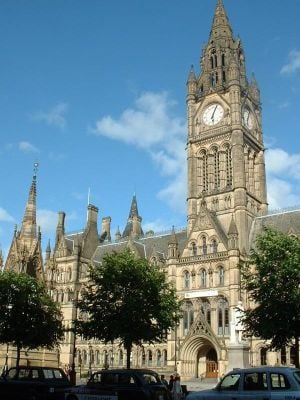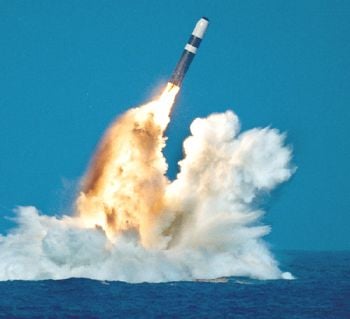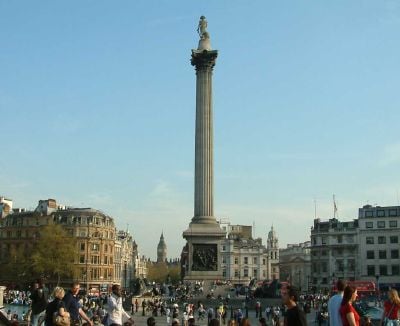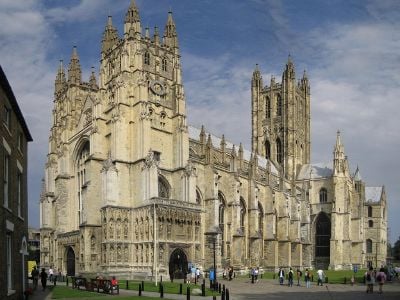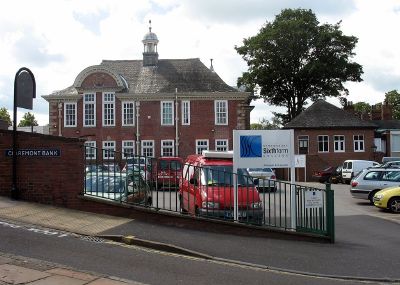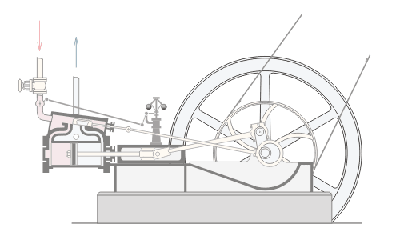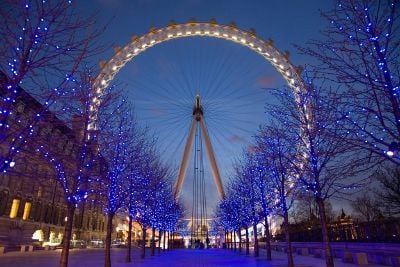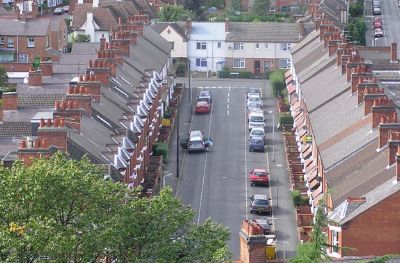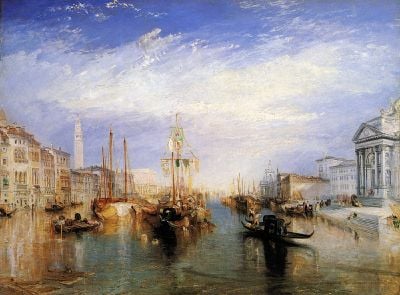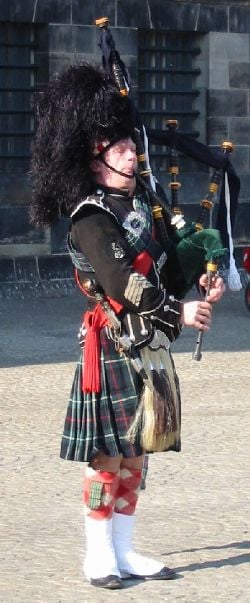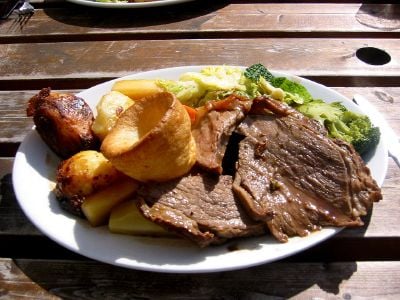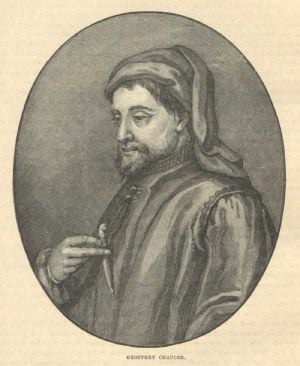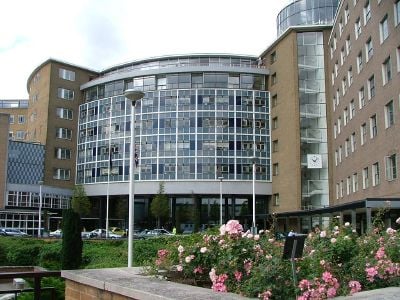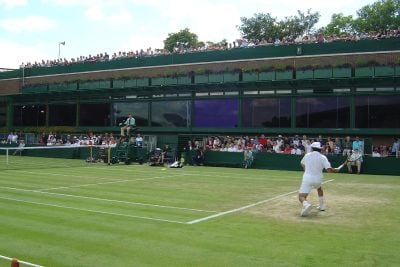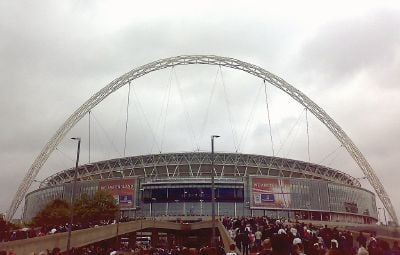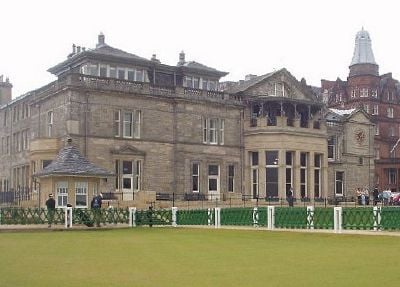United Kingdom
| United Kingdom of Great Britain and Northern Ireland | ||||||
|---|---|---|---|---|---|---|
|
||||||
| Anthem: "God Save the King"[1] |
||||||
| Capital (and largest city) | London | |||||
| Official language(s) | English | |||||
| Recognised regional languages | Irish, Ulster Scots, Scottish Gaelic, Scots, Welsh, Cornish[2] | |||||
| Ethnic groups (2021/2022) | 83.0% White 8.6% Asian 3.7% Black 2.7% Mixed 2.0% Other |
|||||
| Demonym | British or Briton | |||||
| Government | Unitary parliamentary democracy and constitutional monarchy | |||||
| - | Monarch | Charles III | ||||
| - | Prime Minister | Keir Starmer | ||||
| Legislature | Parliament | |||||
| - | Upper House | House of Lords | ||||
| - | Lower House | House of Commons | ||||
| Formation | ||||||
| - | Wales annexed by England | 1535 and 1542 | ||||
| - | Union of the Crowns under James, King of Scots | March 24, 1603 | ||||
| - | Acts of Union of England and Scotland | May 1, 1707 | ||||
| - | Acts of Union of Great Britain and Ireland | January 1, 1801 | ||||
| - | Irish Free State Constitution Act | December 5, 1922 | ||||
| Area | ||||||
| - | Total | 243,610 km2 (78th) 93,628 sq mi |
||||
| - | Water (%) | 1.34 | ||||
| Population | ||||||
| - | 2024 estimate | 68,459,055[3] (21st) | ||||
| - | 2021/2022 census | 66,940,559[4][5][6][7] (22nd) | ||||
| - | Density | 279/km2 (51st) 722.6/sq mi |
||||
| GDP (PPP) | 2024 estimate | |||||
| - | Total | |||||
| - | Per capita | |||||
| GDP (nominal) | 2024 estimate | |||||
| - | Total | |||||
| - | Per capita | |||||
| Gini (2021) | 35.4[9] | |||||
| Currency | Pound sterling (GBP) |
|||||
| Time zone | GMT (UTC+0) | |||||
| - | Summer (DST) | BST (UTC+1) | ||||
| Date formats | dd/mm/yyyy (AD) | |||||
| Drives on the | left[10] | |||||
| Internet TLD | .uk[11] | |||||
| Calling code | 44 | |||||
The United Kingdom of Great Britain and Northern Ireland (commonly known as the United Kingdom, the UK, or Britain) is a state located off the northwestern coast of mainland Europe. It comprises the island of Great Britain, the north-east part of the island of Ireland and many small islands. Northern Ireland is the only part of the UK with a land border, sharing it with the Republic of Ireland which became independent in 1922. Apart from this land border, the UK is surrounded by the Atlantic Ocean, the North Sea, the English Channel and the Irish Sea.
The United Kingdom is a parliamentary democracy and a constitutional monarchy comprising four constituent countries—England, Scotland, Wales and Northern Ireland—with King Charles III as head of state. He is also head of state of sixteen Commonwealth realms that are members of the Commonwealth of Nations of which he is also the head. The Crown Dependencies of the Channel Islands and the Isle of Man, are possessions of the Crown and have a federal relationship with the UK. The UK has fourteen overseas territories which are remnants of the British Empire, which at its height encompassed almost a quarter of the world's land surface. It is a developed country, with the fifth-largest economy in the world by nominal GDP.
Britain was the world's foremost power during the nineteenth and early twentieth century, but the economic cost of two world wars and the decline of its empire in the latter half of the 20th century diminished its leading role in global affairs. The UK nevertheless retains major economic, cultural, military and political influence today and is a nuclear power, holds a permanent seat on the United Nations Security Council, and is a member of the G8, NATO, and the Commonwealth of Nations.
The majority of British citizens identify themselves as Christian, however church attendance has become increasingly low. The UK also has a tradition of religious toleration which has developed over the past four hundred years. It is very common to find Anglican, Catholic, and non-conformist churches on the same street. Jews have been allowed to live and practice their religion freely in Britain for 350 years. Large communities of Muslims, Sikhs, and Hindus have also been established as a result of immigration.
The United Kingdom is an interesting model for people concerned with promoting peace and cooperation. The basis of the union is not uniformity but loyalty to the reigning monarch. When England and Scotland united in 1705, Scotland as the junior partner continued to maintain its own separate judicial and legal system based on Scots Law which quite different to English Common Law; it kept its own church - the Presbyterian Church of Scotland; its school and university system have remained different and under Scottish control; and it kept its own currency issued by its own banks; and it has its own administration so that very few statistics are collected for the UK as a whole. Scotland is free to leave the United Kingdom if the people vote for independence in a referendum. The United Kingdom also has affiliated to it several islands - such as the Channel Islands and Isle of Man which have their own parliaments, laws, currencies, stamps, passports, and rules of residence. The relationships that Britain had with its colonies were also characterized by their diversity each tailored to suit the particular colony, its history and demography. The liberality with which Britain ruled its empire has meant that most of its former colonies still value their association with the mother country and have formed a Commonwealth, the largest association of democracies in the world.
The History of the formation of the United Kingdom is quite complicated. The relationships among its constituent parts has changed many times. The principality of Wales was joined to England in 1536 forming the Kingdom of England and Wales. In 1707 Scotland and England were united to form the Kingdom of Great Britain. In 1801 the Irish and British Parliaments were combined to form the United Kingdom of Great Britain and Ireland. In 1922 twenty six counties left the UK to form the Irish Free State, leaving the present formulation of the United Kingdom of Great Britain and Northern Ireland.
Geography
Located primarily on the island of Great Britain and in Northern Ireland, the United Kingdom is bounded by the Atlantic Ocean, the North Sea, the English Channel, the Celtic Sea and the Irish Sea. The mainland is linked to France by the Channel Tunnel and Northern Ireland shares a land border with the Republic of Ireland. It is estimated that the UK is made up of over 1000 small islands.
With a land area of 94,526 square miles (244,820 square kilometers), the United Kingdom is slightly smaller than Oregon in the United States. The greatest distance between two points on the UK mainland of Great Britain is 840 miles (1,350 km) between Land's End in Cornwall (near Penzance) and John O'Groats in Caithness (near Thurso), a two day journey by car. When measured directly north-south it is a little over 700 miles (1,100 km) in length and is a fraction under 300 miles (500 km) at its widest.
Most of England consists of rolling lowland terrain, with some mountainous terrain in the northwest (Cambrian Mountains of the Lake District) and north (the upland moors of the Pennines) and limestone hills of the Peak District.
Scotland's geography is varied, with lowlands in the south and east and highlands in the north and west, including Ben Nevis, the highest mountain in the British Isles at 4,409 ft (1,344 meters). There are many long and deep-sea arms, firths, and lochs. Scotland has nearly 800 islands, mainly west and north of the mainland, notably the Hebrides, Orkney Islands and Shetland Islands.
Wales (Cymru in Welsh) is mostly mountainous, the highest peak being Snowdon (Yr Wyddfa) at 3560 feet (1085 meters) above sea level. North of the mainland is the island of Anglesey (Ynys Môn). Northern Ireland, making up the north-eastern part of Ireland, is mostly hilly.
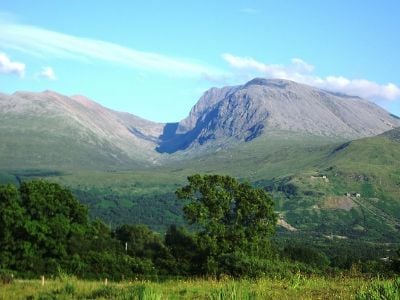
The climate is generally temperate, though significantly warmer than some other locations at similar latitude, such as central Poland, due to the warming influence of the Gulf Stream. The south is warmer and drier than the north.
The prevailing winds are south-westerly, from the North Atlantic Current. More than 50 percent of the days are overcast. There can be strong winds and floods, especially in winter.
Average annual rainfall varies from over 120 inches (3000 millimeters) in the Scottish Highlands down to 21.8 inches (553mm) in Cambridge. The county of Essex is one of the driest in the UK, with an average annual rainfall of around 24 inches (600mm) although it typically rains on over 100 days per year.
The highest temperature recorded in the UK was 101.3°F (38.5°C) at Brogdale, near Faversham, in the county of Kent, on August 10, 2003. The lowest was -17.0°F (27.2°C) recorded at Braemar in the Grampian Mountains, Scotland, on February 11, 1895.
The longest river is the River Severn, at 220 miles (354km), which flows through both Wales and England. The largest lakes are: Lough Neagh in Northern Ireland (147.39 square miles), Loch Lomond in Scotland (27.46 square miles), Lake Windermere in England (5.69 square miles) and 14.74 km²), and Lake Vyrnwy in Wales 3.18 square miles.
The United Kingdom has an extensive system of canals, mostly built in the early years of the Industrial Revolution, before railways were built. There are numerous dams and water reservoirs to store water for drinking and industry. The generation of hydroelectric power is rather limited, supplying less than two percent of British electricity, mainly from the Scottish Highlands.
Originally, oak forests covered the lowlands, while pine forests and patches of moorland covered the higher or sandy ground. Most of the forests have been cleared for cultivation, fuel, construction and ship building so that by 2007, only about 9 percent of the total surface is wooded—in east and north of Scotland and in southeast England. Oak, ash and beech are the most common trees in England, while pine and birch are predominate in Scotland. Heather, grasses, gorse, and bracken are found on the moorlands.
Wolves, bears, boars, and reindeer are extinct, but red and roe deer are protected for sport. Foxes, hares, hedgehogs, rabbits, weasels, stoats, badgers, shrews, rats and mice are common, otters are found in many rivers, and seals appear along the coast. The chaffinch, blackbird, sparrow, and starling are the most numerous of the 230 species of birds there, and another 200 are migratory. Game birds—pheasants, partridges, and red grouse—are protected. The rivers and lakes contain salmon, trout, perch, pike, roach, dace, and grayling.
Agriculture is intensive, highly mechanized, and efficient by European standards, producing about 60 percent of food needs with only one percent of the labor force. It contributes around two percent of GDP. Around two thirds of production is devoted to livestock, and one third to arable crops. The UK has large reserves of coal, natural gas, and oil, as well as limestone, chalk, gypsum, silica, rock salt, china clay, iron ore, tin, silver, gold and lead. There is a lot of good quality arable land.
The United Kingdom is reducing greenhouse gas emissions. It has met Kyoto Protocol target of a 12.5 percent reduction from 1990 levels and intends to meet the legally binding target of a 20 percent cut in emissions by 2010. Between 1998-1999 and 1999-2000, household recycling increased from 8.8 percent to 10.3 percent.
London is the capital city of England and the United Kingdom. It is made up of two cities: the ancient City of London which is the financial capital still enclosed by its tiny mediaeval boundaries; and the City of Westminster, which is much larger and is the political capital. London, with a population of 7.7 million, is one of the world's leading business, financial and cultural centers, and its influence in politics, education, entertainment, media, fashion and the arts all contribute to its status as one of the major global cities
Edinburgh, with a population of 448,624 in 2001, is the capital of Scotland, Cardiff, with a population of 380,000 in 2007, is the capital of Wales, and Belfast, with a population of 579,554 in 2001, is the capital of Northern Ireland.
History of the United Kingdom
The history of the formation of the United Kingdom is long and complex. England and Scotland have existed as separate sovereign and independent states with their own monarchs and political structures since the ninth century. The once independent Principality of Wales fell under the control of English monarchs from the Statute of Rhuddlan in 1284. The Treaty of Union in 1706, ratified by the Acts of Union 1707, united the kingdoms of England (including Wales) and Scotland, which had been in personal union since the Union of the Crowns in 1603, agreed to a political union in the form of a united Kingdom of Great Britain. This United Kingdom of Great Britain was to be represented by one and the same parliament, the Parliament of Great Britain.
The Act of Union 1800 united the Kingdom of Great Britain with the Kingdom of Ireland, which had been gradually brought under English control between 1541 and 1691, to form the United Kingdom of Great Britain and Ireland in 1801. Independence for the Irish Free State in 1922 followed the partition of the island of Ireland two years previously, with six of the nine counties of the province of Ulster remaining within the UK, which then changed to the current name in 1927 of the United Kingdom of Great Britain and Northern Ireland.
Following the establishment of the union Great Britain entered a long period of internal peace and stability which was accompanied by the breakdown of internal borders and the expansion of trade. England, while ceasing to exist as an independent political entity, has remained dominant in what is now the United Kingdom of Great Britain and Northern Ireland. Due to her geographic size and large population, the dominant political and economic influence in the UK stems from England. London has remained the capital city of the UK and has built upon its status as the economic and political centre of the UK. It is also one of the world's great cities.
Relations with Europe
Britain's general policy with regard to Europe had two main features. The first was to maintain the balance of power and prevent any single country from dominating the continent. To achieve this Britain formed alliances with weaker countries and at different times engaged in wars with Spain, France and Germany. As France was the most powerful and aggressive nation on the continent, it was the country that these alliances were directed against. France was also Britain's main rival abroad. This rivalry between Britain and France has been described as The Second Hundred Years' War (1689-1815). The second feature was to support liberal movements in Europe and oppose autocracy. This was epitomized by George Canning's foreign policy "to leave each country free to settle its own internal affairs." Britain's oldest ally in Europe is Portugal.
The War of the Spanish Succession (1702-1713) was a result of the determination of Britain to prevent France and Spain falling under a single monarch after the death of King Charles II of Spain. The Partition Treaties of (1697) and (1700) had been agreed by Britain, France and Holland. However Louis XIV disregarded them and accepted Spain for his grandson. This led to the formation of the Grand Alliance of Britain, Holland and Austria to enforce the agreement and place Archduke Charles on the throne of Spain. Britain's most brilliant general, the Duke of Marlborough, defeated the French at the battles of Blenheim, Ramillies, Oudenarde and Malplaquet. The Treaty of Utrecht (1713) which ended the war stated that the crowns of Spain and France should never be united and ceded Newfoundland, Hudson's Bay, Nova Scotia and Gibraltar to Britain.
The Triple Alliance (1717) was formed with France and Holland to uphold the Treaty of Utrecht. In 1718 Austria joined and it was expanded to the Quadruple Alliance against Spain and to maintain the peace of Europe. When Spain attacked Sicily Admiral Byng destroyed the Spanish fleet off Cape Passaro.
The War of Austria Succession (1743-1748) was fought against France, Prussia and Bavaria to uphold the claim of Maria Teresa to the hereditary dominions of her father Holy Roman Emperor Charles VI. On his death Prussia under Frederick the Great invaded and kept Silesia.
The Seven Years' War (1756-1763) was the first war waged on a global scale, fought in Europe, India, North America, the Caribbean, the Philippines and coastal Africa. It was fought by Britain and Prussia against France, Russia and Saxony who had banded together to help Maria Theresa recover Silesia. Britain won a series of victories against France on the continent but more significantly in India under Robert Clive which led to the end of French power in India and the eventual incorporation of India into the British Empire. In North America the French were defeated in the south at Fort Duquesne and in Canada by James Wolfe who defeated Montcalm and captured Quebec at the Battle of the Heights of Abraham in 1759. These battles ended French power in North America and left New France as Quebec was called under British rule. The Seven Years War was ended by the Treaty of Paris (1763) which recognized Britain's made gains from France and Spain. This marked the beginning of British dominance outside Europe.
Following the French Revolution in 1789, the French Convention offered to help all nations overthrow their kings and threatened to invade Holland which was protected by a treaty with Britain. This led to war with the French Republic (1793-1801) during which Britain defeated the French fleet off Brest. Britain then declared war on Holland for supporting France and took from it the Cape of Good Hope and Ceylon. The ensuing struggle with France under Napoleon, unlike previous wars, represented a contest of ideologies between the two nations.[12] It was not only Britain's position on the world stage that was threatened: Napoleon threatened to invade Britain itself and subject it to the same fate as the countries of continental Europe that his armies had already overrun. So Britain invested large amounts of capital and resources into the Napoleonic Wars even to the point of causing financial crises and social problems at home. Nelson's victory at the Battle of Trafalgar thwarted Napoleon's plans to invade Britain. The Peninsular War marked the beginning of the defeat of Napoleon. Although it was Russia that rolled back Napoleon's army, France was finally defeated by the Duke of Wellington who commanded a coalition of European armies at the Battle of Waterloo 1815. Peace was made at the Treaty of Paris (1815) which returned France to its 1790 borders.
Britain refused to join the Holy Alliance formed by other European countries in 1815 to crush any liberal movements that were inspired by the ideals of the French Revolution. Instead it tended to give succor to liberal and democratic movements on the continent giving refugee to exiles and revolutionaries. Following the end of the Twenty-two Years War (1793-1815) Britain enjoyed 40 years of peace in Europe until the outbreak of the Crimean War (1853-1856) in which Britain and France sided with the Ottoman Empire against Russia which had now replaced France as Britain's rival in Central Asia.
The unification of Germany under Bismarck changed the balance of power on the continent and with the defeat of France by Prussia in 1870 Britain began to realign itself culminating in the Entente Cordiale signed in 1904 with France. This signified the end of a thousand years of conflict between the two nations. Britain and Russia also signed a convention in 1907 to resolve long-standing disputes over their respective imperial peripheries. These paved the way for the diplomatic and military cooperation that preceded World War I.
The First British Empire (1583-1783)
The American colonies
Britain was one of several European nations that tried to establish colonies in the Americas. In time the colonies established by other countries in North America were other captured, bought or taken over by Britain. The first colonies in North America were initiated by speculators such as the London Company and Plymouth Company which were joint stock companies that had been given patents by the Crown. The first attempt was made in 1583 by Sir Humphrey Gilbert. It was not a success and the following year Sir Walter Raleigh made an unsuccessful attempt to found Virginia. The first enduring settlement was Jamestown founded in 1608. The main impetus for British expansion was trade and commerce sponsored by the City of London and not the desire for empire for its own sake.
The other sources of colonists were religious dissenters such as the Puritans, who came to be known as the Pilgrim Fathers. They set sail from Plymouth, England to found a new colony in America where they could worship in the way they wanted. Other Puritans founded Massachusetts Bay Colony, Connecticut, Boston Massachusetts, Pennsylvania and Rhode Island. The American colonies, which provided tobacco, cotton, and rice in the south and naval materiel and furs in the north had large areas of good agricultural land and attracted large numbers of English emigrants who liked the temperate climate. The Seven Years War resulted in France losing its colonies in North America.
The Caribbean initially provided England's most important and lucrative colonies which soon adopted the system of sugar plantations successfully used by the Portuguese in Brazil, which depended on slave labor, and - at first - Dutch ships, to sell the slaves and buy the sugar. To ensure the increasingly healthy profits of this trade remained in English hands, Parliament decreed in 1651 that only English ships would be able to ply their trade in English colonies. This led to hostilities with the United Dutch Provinces- a series of Anglo-Dutch Wars - which would eventually strengthen England's position in the Americas at the expense of the Dutch.
Slavery was a vital economic component of the British Empire in the Americas. Until the abolition of the slave trade in 1807, Britain was responsible for the transportation of 3.5 million African slaves to the Americas, a third of all slaves transported across the Atlantic.[13]
For the slave traders, the trade was extremely profitable, and became a major economic mainstay for such cities as Bristol and Liverpool, which formed the third corner of the so-called triangular trade with Africa and the Americas. However, for the transportees, harsh and unhygienic conditions on the slaving ships and poor diets meant that the average mortality rate during the middle passage was one in seven.
India
In 1600 the Honourable East India Company was founded to trade with India. The company evolved from a commercial trading venture to one which virtually ruled India as it acquired auxiliary governmental and military functions, along with a very large private army consisting of local Indian sepoys (soldiers), who were loyal to their British commanders. The British East India Company is regarded by some as the world's first multinational corporation. Company interests turned from trade to territory during the 18th century as the Mughal Empire declined in power and the British East India Company struggled with its French counterpart, the La Compagnie française des Indes orientales, during the Carnatic Wars of the 1740s and 1750s. The Battle of Plassey, which saw the British, led by Robert Clive, defeat the French and their Indian allies, left the Company in control of Bengal and a major military and political power in India. Its territorial holdings were subsumed by the British Crown in 1858, in the aftermath of the Indian Mutiny.
The Loss of the Thirteen Colonies
During the 1760s and 1770s, relations between the Thirteen Colonies and Britain became increasingly strained, primarily because of resentment of the British Parliament's ability to tax American colonists without their consent.[13] Disagreement turned to violence and in 1775 the American Revolutionary War began. The following year, the colonists declared independence and with assistance from France, went on to win the war in 1783.
The loss of the United States, at the time Britain's most populous colony, is seen by historians as the event defining the transition between the "first" and "second" empires,[14] in which Britain shifted its attention away from the Americas to Asia, the Pacific and later Africa. Canada remained a British territory and its population grew with a large influx of loyalists who fled north during the Revolutionary War. The future of British North America was briefly threatened during the War of 1812, in which the United States unsuccessfully attempted to extend its border northwards. This was the last time that Britain and America went to war.
The Second British Empire (1783-1815)
In 1768 James Cook set out from England with secret instructions from King George III to lay claim to what is now known as Australia which he did in 1770 after charting the continent's east coast. In 1778 a penal settlement was established at Botany Bay when the first shipment of convicts arrived. In 1826, Australia was formally claimed for the United Kingdom with the establishment of a military base, soon followed by a colony in 1829 which became a profitable exporter of wool and gold.
Cook also mapped the coastline of New Zealand which came under British rule in 1840 after a Treaty of Waitangi was signed with the Maori.
Britain acquired Cape Colony in South Africa, and its large Afrikaner (or Boer) population of Dutch descent in 1806. British immigration began to rise after 1820, and pushed thousands of Boers, resentful of British rule, northwards to found the Transvaal and the Orange Free State during the Great Trek of the late 1830s and early 1840s. Later Britain won the Boer Wars and annexed these states.
The imperial century (1815–1914)
Between 1815 and 1914, a period referred to as Britain's "imperial century" by some historians[15][16], around ten million square miles of territory and roughly 400 million people were added to the British Empire.[17] Victory over Napoleon left Britain without any serious international rival, other than Russia in central Asia.[18] Unchallenged at sea, Britain adopted the role of global policeman, a state of affairs later known as the Pax Britannica. Alongside the formal control it exerted over its own colonies, Britain's dominant position in world trade meant that it effectively controlled the economies of many nominally independent countries, such as in Latin America, China and Siam, which has been characterized by some historians as "informal empire."[18]
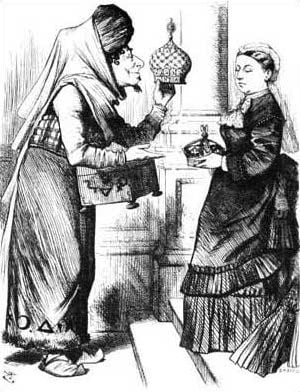
From its base in India, the East India Company had a monopoly on trade with China, importing silks, tea and porcelain to sell in Britain. China would not import any foreign goods in exchange and only accepted payment in silver. This caused a serious trade imbalance and huge outflows of silver from Britain to China. The Company discovered a Chinese demand for opium and started exporting it to China. This trade, technically illegal since it was outlawed by the Qing dynasty in 1729, helped reverse the trade imbalances and the flow of silver was reversed.[19] In 1839, the seizure by the Chinese authorities at Canton of 20,000 chests of opium belonging to British traders sparked the First Opium War, and the seizure by Britain of the island of Hong Kong as a base.
The end of the Company was precipitated in India by a mutiny of sepoys against their British commanders over the rumored introduction of rifle cartridges lubricated with animal fat. Use of the cartridges, which required biting open before use, would have been in violation of the religious beliefs of Hindus and Muslims (had the fat been that of cows or pigs, respectively). However, the Indian Rebellion of 1857 had causes that went beyond the introduction of bullets: at stake was Indian culture and religion, in the face of the steady encroachment of that by the British. As a result of the war, the British government assumed direct control over India, ushering in the period known as the British Raj. The East India Company was dissolved the following year, in 1858.
Britain acquired Cape Colony in South Africa, and its large Afrikaner (or Boer) population of Dutch descent, in 1806. British immigration began to rise after 1820, and pushed thousands of Boers, resentful of British rule, northwards to found the Transvaal and the Orange Free State during the Great Trek of the late 1830s and early 1840s. Later Britain won the Boer Wars and annexed these states.
In 1875 the two most important European holdings in Africa were French controlled Algeria and the United Kingdom's Cape Colony. By 1914 only Ethiopia and the republic of Liberia remained outside formal European control. The transition from an "informal empire" of control through economic dominance to direct control took the form of a "scramble" for territory by the nations of Europe. The United Kingdom tried not to play a part in this early scramble, being more of a trading empire rather than a colonial empire; however, it soon became clear it had to gain its own African empire to maintain the balance of power.
In 1875, the British government of Benjamin Disraeli bought the indebted Egyptian ruler's shareholding in the Suez Canal for £4 million to secure control of this strategic waterway, a channel for shipping between the United Kingdom and India. To secure the canal Britain occupied Egypt in 1882. A preoccupation over securing control of the Nile valley, lead to the conquest of the neighboring Sudan in 1896.
British gains in southern and East Africa prompted Cecil Rhodes, pioneer of British expansion from South Africa northward, to urge a "Cape-to-Cairo" British controlled empire linking by rail the strategically important Suez Canal to the mineral-rich South. In 1888 Rhodes with his privately owned British South Africa Company occupied and annexed territories which were called after him: Rhodesia now known as Zimbabwe. Together with British High Commissioner in South Africa between 1897-1905, Alfred Milner, Rhodes pressured the British government for further expansion into Africa. After World War I German East Africa came under British control.
The aftermath of World War I saw the last major extension of British rule, with the United Kingdom gaining control through League of Nations Mandates in Palestine and Iraq after the collapse of the Ottoman Empire in the Middle East, as well as in the former German colonies of Tanganyika, South-West Africa (now Namibia) and New Guinea (the last two actually under South African and Australian rule respectively).
Social and political changes
Agricultural revolution
The open field system that had existed from the Middle Ages involved each farmer subsistence-cropping strips of land in one of three or four large fields held in common and splitting up the products likewise. This gradually changed in response to need for enclosures so as to allow for the use of more modern methods and agricultural mechanization. A series of government acts, culminating finally in the General Enclosure Act of 1801. While farmers received compensation for their strips, it was minimal, and the loss of rights for the rural population led to an increased dependency on the Poor law. Poor farmers sometimes had to sell their share of the land to pay for its being split up. Only a few found work in the (increasingly mechanized) enclosed farms. Most were forced to relocate to the cities to try to find work in the emerging factories of the Industrial Revolution.
It was in England that many of the new developments in agricultural technology took place. Jethro Tull invented the seed drill in 1701. Joseph Foljambe in 1730 produced the first commercially successful iron plough. Andrew Meikle's developed a threshing machine in 1786 and in the 1850s and 1860s John Fowler, an agricultural engineer and inventor, produced a steam-driven engine that could plough farmland more quickly and more economically than horse-drawn ploughs.
Robert Bakewell and Thomas Coke introduced selective breeding (mating together two animals with particularly desirable characteristics), and inbreeding (to stabilize certain qualities) in order to reduce genetic diversity in desirable animals programs from the mid-eighteenth century. These methods proved successful in the production of larger and more profitable livestock.
The Agricultural Revolution in Britain proved to be a major turning point in history. The population in 1750 reached the level of 5.7 million. This had happened before: in around 1300 and again in 1650. Each time, the appropriate agricultural infrastructure to support a population this high was not present, and the population fell. However, by 1750, when the population reached this level again, an onset in agricultural technology and new methodology allowed the population growth to be sustained.
The increase in population led to more demand from the people for goods such as clothing. A new class of landless laborers, products of enclosure, provided the basis for cottage industry, a stepping stone to the Industrial Revolution. To supply continually growing demand, shrewd businessmen began to pioneer new technology to meet demand from the people. This led to the first industrial factories. People who once were farmers moved to large cities to get jobs in the factories. It should be noted that the British Agricultural Revolution not only made the population increase possible, but also increased the yield per agricultural worker, meaning that a larger percentage of the population could work in these new, post-Agricultural Revolution jobs.
The Industrial Revolution
Britain led the Industrial Revolution, a period in the late eighteenth and early nineteenth centuries when technological advances and mechanization transformed a largely agrarian society throughout Europe, causing considerable social upheaval. Its birthplace is traditionally thought of as Ironbridge where in 1711 the Quaker ironmaster Abraham Darby I perfected the technique of smelting iron with coke, allowing much cheaper production of iron. It was this innovation in metallurgy accompanied by the development of steam power and technological inventions in textile manufacturing that formed the beginning of the industrial revolution. Other significant factors were that Britain had the necessary raw materials (coal and iron ore), a single market, a well developed legal system with property rights and enforceable contracts, relatively little state interference or control of the economy, the sea, navigable roads and improving roads and canals for transport, entrepreneurs and capital markets, a large scientific community, a relatively free market, a supply of cheap labor and cheap food. Other innovations included the invention of cement, new chemical processes, machine tools, ship building, gas lighting and glass making. One of the most important was the development of mass production in large factories which allowed for huge economies of scale. Many of the leading figures of the industrial revolution came from non-conformist backgrounds. In the nineteenth century Britain came to be known as the "workshop of the world."
Much of the agricultural workforce uprooted from the countryside moved into large urban centers of production, as the steam-based production factories could undercut traditional cottage industries. This rapid urbanization led to the world's first industrial city - Manchester. The consequent overcrowding into areas with little supporting infrastructure saw dramatic increases in the rise of infant mortality (to the extent that many Sunday schools for pre-working age children (five or six) had funeral clubs to pay for each other's funeral arrangements) and social deprivation. Children were employed in factories and coal mines with often in dangerous jobs. Many workers saw their livelihoods threatened by the process, and some frequently sabotaged or attempted to sabotage factories. These saboteurs were known as Luddites.
Religious changes
From the seventeenth to the nineteenth century the UK experienced many religious revivals which often resulted in the formation of new Christian churches such as the Methodists and Congregationalists. These non-conformists often were excluded by the Anglican establishment and instead poured their energies into overseas missionary work, social action, and business. The reforming zeal also led to the development of the anti-slavery movement whose leader was William Wilberforce, Methodist revival, evangelical revival, tractarianism, Christian socialism, the Salvation Army, social reform, moral reform, charities, schools, and hospitals, etc.
Political reform
During the early nineteenth century, the working classes began to find a voice. Concentrations of industry led to the formation of guilds and unions, which, although at first suppressed, eventually became powerful enough to resist government policy. Chartism is thought to have originated from the passing of the 1832 Reform Bill, which gave the vote to the majority of the (male) middle classes, but not to the "working class." Many people made speeches on the "betrayal" of the working class and the "sacrificing" of their "interests" by the "misconduct" of the government. In 1838, six members of Parliament and six workingmen formed a committee, which then published the People's Charter.
But by the end of the Victorian era (1900), the United Kingdom lost its industrial leadership, particularly to the United States, which surpassed the UK in industrial production and trade in the 1890s, as well as to the German Empire.
Victorian Age
The Victorian era of the United Kingdom marked the height of the British Industrial Revolution and the apex of the British Empire. Although commonly used to refer to the period of Queen Victoria's rule between 1837 and 1901, scholars debate whether the Victorian period—as defined by a variety of sensibilities and political concerns that have come to be associated with the Victorians—actually begins with the passage of the Reform Act 1832. The era was preceded by the Regency era and succeeded by the Edwardian period.
By virtue of Queen Victoria's marriage to Prince Albert, son of Duke Ernst I of the small German duchy of Saxe-Coburg and Gotha, her descendants were members of the ducal family of Saxe-Coburg and Gotha with the house name of Wettin. Victoria's son Edward VII and his son George V reigned as members of this house.
World War I
The First World War was a global military conflict which took place primarily in Europe between 1914 and 1918. More than nine million soldiers and civilians died. The conflict had a decisive impact on the history of the twentieth century. The Entente Powers, led by France, Russia, the United Kingdom and later Italy (from 1915) and the United States (from 1917), defeated the Central Powers, led by the Austro-Hungarian, German, and Ottoman Empires. Russia withdrew from the war after the revolution in 1917.
High anti-German feeling among the people during World War I prompted the Royal Family to abandon all titles held under the German crown and to change German-sounding titles and house names for English-sounding versions. On July 17, 1917, a royal proclamation by George V provided that all agnatic descendants of Queen Victoria would be members of the House of Windsor with the personal surname of Windsor. The name Windsor has a long association with English royalty through the town of Windsor and Windsor Castle.
After the carnage of the Great War, Britain remained an eminent power, and its empire expanded to its maximum size, gaining the League of Nations mandate over former German and Ottoman colonies after World War I. By 1921, the British Empire held sway over a population of about 458 million people, approximately one-quarter of the world's population. It covered about 14.2 million square miles, about a quarter of Earth's total land area. As a result, its legacy is widespread, in legal and governmental systems, economic practice, militarily, educational systems, sports (such as cricket, rugby and football), and in the global spread of the English language and Anglican Christianity. At the peak of its power, it was often said that "the sun never sets on the British Empire" because its span across the globe ensured that the sun was always shining on at least one of its numerous colonies or subject nations.
Independence for the Irish Free State in 1922 followed the partition of Ireland two years previously, with six of the nine counties of the province of Ulster remaining within the UK, which then changed in 1927 to the name of the United Kingdom of Great Britain and Northern Ireland.
World War II
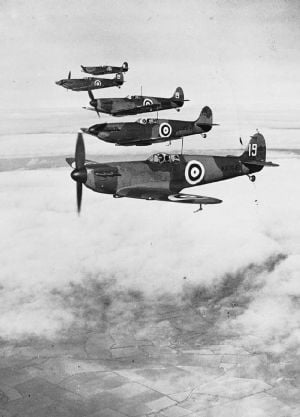
The Second World War, was a worldwide military conflict which lasted from 1939 to 1945. It was the amalgamation of two conflicts, one beginning in Asia, in 1937, as the Second Sino-Japanese War and the other beginning in Europe, in 1939, with the invasion of Poland. It is regarded as the historical successor to World War I. The majority of the world's nations split into two opposing camps: the Allies and the Axis. The UK fought with its Commonwealth allies including Canada, Australia, New Zealand, South Africa and India, later to be joined by further allies. Spanning much of the globe, World War II resulted in the deaths of over 60 million people, making it the deadliest conflict in human history. The conflict ended in an Allied victory.
Wartime leader Winston Churchill and his successor Clement Atlee helped plan the post-war world as part of the "Big Three." World War II, however, left the United Kingdom financially and physically damaged. Loans taken out during and after World War II from the United States and from Canada were economically costly, but, along with post-war US Marshall aid, they started the UK on the road to recovery. As a result, the United States and Soviet Union emerged as the world's two leading superpowers, setting the stage for the Cold War for the next 45 years. Self determination gave rise to independence movements in Asia and Africa, while Europe itself began traveling the road leading to integration. During the five decades following World War II, most of the territories of the Empire became independent. Many went on to join the Commonwealth of Nations, a free association of independent states.
Multi-ethnic welfare state
The immediate post-war years brought the establishment of the British Welfare State and one of the world's first and most comprehensive health services, while the demands of a recovering economy brought people from all over the Commonwealth to create a multi-ethnic UK. Although the new postwar limits of Britain's political role were confirmed by the Suez Crisis of 1956, the international currency of the language meant the continuing impact of its literature and culture, while at the same time from the 1960s its popular culture found an influence abroad.
Following a period of economic stagnation and industrial strife in the 1970s after a global economic downturn, the 1980s saw the inflow of substantial North Sea oil revenues, and the premiership of Margaret Thatcher, under whom there was a marked break with the post-war political and economic consensus. Her supporters credit her with economic success, but her critics blame her for greater social division. From the mid-1990s onward these trends largely continued under the leadership of Tony Blair.
The United Kingdom joined the European Union in 1973. Attitudes towards further integration with this organization have been mixed. In 2016, the United Kingdom held a referendum and the majority voted to leave the European Union. As a result of this, Prime Minister David Cameron announced that he would resign. Under the leadership of Prime Minister Boris Johnson, the United Kingdom withdrew from the European Union in January 2020.
Government and politics
Structure
The United Kingdom is a liberal democracy and a constitutional monarchy. Hereditary monarch King Charles III has been head of state since September 8, 2002, while the Heir Apparent is Prince William, the son of the King and his first wife Diana, Princess of Wales, born June 21, 1982. After legislative elections, the leader of the majority party, or the leader of the majority coalition, is usually the prime minister who appoints a cabinet.
The bicameral parliament consists of a House of Lords, which has 618 seats consisting of approximately 500 life peers, 92 hereditary peers, and 26 clergy, and a House of Commons, which has 646 members elected by popular vote to serve terms of five-years, or less if the House is dissolved earlier. The parliament is traditionally considered to be "supreme" in that it is able to legislate on any matter and not bound by decisions of its predecessors.
In the House of Lords, elections are held only as vacancies in the hereditary peerage arise, whereas in the House of Commons, elections are held within a maximum of five years.
The United Kingdom is one of the few countries in the world today that does not have a codified constitution, relying instead on traditional customs and separate pieces of constitutional law. The British system of government has been emulated around the world—a legacy of the British Empire's colonial past—most notably in the other Commonwealth Realms.
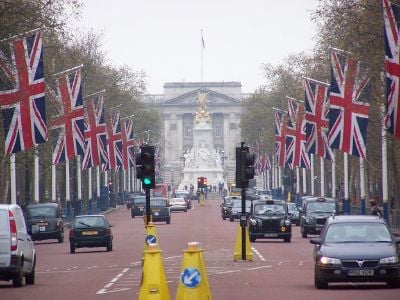
In the United Kingdom, the monarch has extensive latent powers which she would be expected to use if necessary. The monarch is an integral part of Parliament (as the "Crown-in-Parliament") and gives Parliament the authority to meet and pass legislation. An Act of Parliament does not become law until it has been signed by the monarch (known as Royal Assent), although none has refused assent to a bill that has been approved by Parliament since Queen Anne in 1708. Although the abolition of the monarchy has been suggested, the popularity of the monarchy remains strong in the United Kingdom.
Since the 1920s, the two largest political parties in British politics have been the Labour Party and Conservative Party. Though coalition and minority governments have been an occasional feature of Parliamentary politics, the first-past-the-post electoral system tends to maintain the dominance of these two parties, though each has in the past century relied upon a third party to deliver a working majority. The Liberal Democrats, the third largest party, seek a reform to proportional representation to address the dominance of the two-party system.
Though many in the United Kingdom consider themselves "British" as well as "English," "Scottish," "Welsh," or "Irish" (and increasingly also "Afro-Caribbean," "Indian," or "Pakistani"), there has long been a widespread sense of separate national identities in the nations of Scotland and Wales, and among the Catholic community in Northern Ireland. Independence for the Republic of Ireland in 1922 provided only a partial solution to what had been termed since the nineteenth century the "Irish Question," and competing demands for a united Ireland or continued union with Great Britain have brought civil strife and political instability up to the present day.
Though "nationalist" (as opposed to "unionist") tendencies have shifted over time in Scotland and Wales, with the Scottish National Party founded in 1934 and Plaid Cymru (the Party of Wales) in 1925, a serious political crisis threatening the integrity of the United Kingdom has not occurred since the 1970s. Scotland, Wales, and Northern Ireland each possess a legislature and government alongside that of the United Kingdom. However, this increased autonomy and devolution of executive and legislative powers has not contributed to a reduction in support for independence from the United Kingdom, with increased support for pro-independence parties. Furthermore there has developed within England a demand that Scottish and Welsh MPs should not be able to vote on legislation that only affects England.
The resurgence in the Celtic language and identity, as well as "regional" politics and development, has contributed to forces pulling against the unity of the state. In Northern Ireland, there has been a significant decrease in violence over the last 20 years, though the situation remains tense, with the more hardline parties, such as Sinn Féin and the Democratic Unionists, now holding the most parliamentary seats.
The United Kingdom has three distinct systems of law. English law, which applies in England and Wales, and Northern Ireland law, which applies in Northern Ireland, are based on common law principles. Scots law, which applies in Scotland, is a hybrid system based on both common law and civil law principles. The Act of Union 1707 guarantees the continued existence of a separate legal system for Scotland.
The Appellate Committee of the House of Lords is the highest court in the land for all criminal and civil cases in England, Wales, and Northern Ireland, and for all civil cases in Scots law. Recent constitutional changes will see the judicial powers of the House of Lords transfer to a new Supreme Court of the United Kingdom.
In England and Wales, the court system is headed by the Supreme Court of Judicature of England and Wales, consisting of the Court of Appeal, the High Court of Justice (for civil cases) and the Crown Court (for criminal cases). In Scotland, the chief courts are the Court of Session, for civil cases, and the High Court of Justiciary, for criminal cases, while the sheriff court is the Scottish equivalent of the county court. The Judicial Committee of the Privy Council is the highest court of appeal for several independent Commonwealth countries, the UK overseas territories, and the British crown dependencies.
Administrative subdivisions
The United Kingdom is divided into four parts, commonly referred to as the constituent countries. Each nation is further subdivided into counties, unitary authorities and parishes for the purposes of local government. City status is governed by Royal Charter. In 2007, there were 66 British cities (50 in England, six in Scotland, five in Wales, and five in Northern Ireland). The King appoints a Lord-Lieutenant as her personal representative in lieutenancy areas across the UK, which is little more than a ceremonial role.
The City of London has a special constitutional status within the UK. It has had a continuous self-governing history since its foundation by the Romans. Unlike the rest of England it was not conquered by William I and retained its traditional freedoms. This has enabled it to attain its pre-eminent status in world finance.
The British crown has sovereignty over the Bailiwicks of Jersey and Guernsey, and the Isle of Man, known collectively as the crown dependencies. These are islands owned by the British monarch, but are not part of the United Kingdom. However the British government manages their foreign affairs and defense.
The UK also has 14 overseas territories around the world, the last remaining territories of the British Empire. The overseas territories are not considered part of the UK, but in some cases the local populations have British citizenship and the right to live in the UK.
Military
The armed forces of the United Kingdom are known as His Majesty's Armed Forces. Their Commander-in-Chief is the British monarch, they are managed by the Ministry of Defence, and are controlled by the Defence Council.
The United Kingdom fields one of the most powerful and comprehensive armed forces in the world. It has significant global capabilities, with total allied naval tonnage second only to the United States military and the third largest share of tactical combat aircraft to the US and France. The UK has the second or third highest military expenditure in the world, after the United States and China. The United Kingdom possesses a comprehensive nuclear arsenal, one of the small number of countries to do so, utilizing the submarine-based Trident II ballistic missile system with nuclear warheads.
The British Armed Forces are active participants in the North Atlantic Treaty Organization (NATO) and other coalition operations.
The Royal Navy operates the United Kingdom's nuclear deterrent, which consists of Trident missile-armed submarines, while the Royal Marines are the Royal Navy's Light Infantry units for amphibious operations and for specialist reinforcement forces in and beyond the NATO area.
There are also reserve forces supporting the regular military. These include an army reserve, the Territorial Army (TA); the Royal Naval Reserve (RNR), Royal Marines Reserve (RMR) and the Royal Auxiliary Air Force (RAuxAF). About 9 percent of the regular armed forces is made up of women, with more in the reserve forces.
The United Kingdom Special Forces, principally the Special Air Service (SAS) and Special Boat Service (SBS), but including others, provide troops trained for quick, mobile, military responses in counter-terrorism, land, maritime and amphibious operations, often where secrecy or covert operations are required. The last war in which the British military fought alone was the Falklands War of 1982, with full-scale combat operations lasting almost three months.
Foreign relations
The United Kingdom is a permanent member of the United Nations Security Council. The United Kingdom also has close relations with the United States, the Special Relationship. Britain's close allies outside of Europe include members of the Anglosphere and Commonwealth of Nations, a legacy of the British Empire. With its membership of the G8 and NATO, Britain has a certain influence in international institutions. Britain's global presence is amplified further through its trading relations and its armed forces, which maintains approximately 80 military installations and other deployments around the globe.
Economy
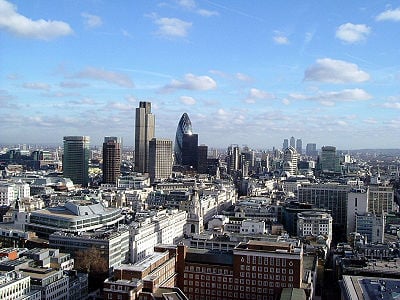
The British economy is the home of the Anglo-Saxon economic model, focusing on the principles of liberalization, the free market, "common law" relating to property, and low taxation and regulation.
The Industrial Revolution began in Britain. Like most industrializing countries at the time, initially concentrated on heavy industries such as shipbuilding, coal mining, steel production, and textiles. The empire created an overseas market for British products, allowing the United Kingdom to dominate international trade in the nineteenth century. However, as other nations industrialized with better educated, cheaper and less unionized labor, as well as better management, the United Kingdom started to lose its economic advantage. As a result, heavy industry and later manufacturing declined throughout the twentieth century. The British service sector, however, has grown substantially.
In the 1980s, under the Government of Margaret Thatcher, most state-owned enterprises in the industrial and service sectors, which since the 1940s had been nationalized, were privatized. The British Government now owns very few businesses apart from the postal service and a few others.
The service sector of the United Kingdom is dominated by financial services, especially in banking and insurance. London is one of the world's largest financial centers with the London Stock Exchange, the London International Financial Futures and Options Exchange, and the Lloyd's of London insurance market all based in the City of London. It also has the largest concentration of foreign bank branches in the world. In the past decade it has expanded into the Docklands area, with HSBC, Citigroup, and Barclays Bank all relocating their head offices there. The Scottish capital, Edinburgh also has one of the large financial centers in Europe.
The British manufacturing sector, however, has greatly diminished since World War II. The British motor industry is a significant part of this sector, although all large-volume producers are now foreign-owned. Civil and defense aircraft production is led by the United Kingdom's largest aerospace firm, BAE Systems, and the pan-European consortium known as Airbus. Rolls-Royce holds a major share of the global aerospace engines market. The chemical and pharmaceutical industry is also strong in the UK, with the world's second and third largest pharmaceutical firms (GlaxoSmithKline and AstraZeneca, respectively) being based in the UK.
The United Kingdom's agriculture sector is small by European standards. The UK has large coal, natural gas, and oil reserves.
Tourism is very important to the British economy.
The currency of the UK is pound sterling, represented by the symbol £. The Bank of England is the central bank and is responsible for issuing currency, although banks in Scotland and Northern Ireland retain the right to issue their own notes, subject to retaining enough Bank of England notes in reserve to cover the issue.
Government involvement over the economy is exercised by the Chancellor of the Exchequer who heads HM Treasury, but the Prime Minister, is First Lord of the Treasury (the Chancellor of the Exchequer being the Second Lord of the Treasury). However since 1997, the Bank of England has control of interest rates and other monetary policy. The UK government has greatly increased public sector spending (i.e., government spending of taxes) since 1995, and annual spending on investment in infrastructure has grown significantly.
The government's Department for Transport oversees transport system in the United Kingdom. A radial road network of 29145 miles of main roads is centered on London, Edinburgh, and Belfast, while, in Great Britain, a motorway network of 2173 miles is centered on Birmingham and London. There are a further 213,750 miles of paved roads.
The National Rail network of 10,072 route miles (16,116 route kilometers) in Great Britain and 189 route miles (303km) in Northern Ireland carries over 18,000 passenger trains and 1000 freight trains daily. Urban rail networks are well developed in London and several other cities. There were once over 30,000 route miles of rail network in the U.K., however most of this was reduced from 1955 to 1975, much of it after a report by a government adviser Richard Beeching in the mid-1960s (known as the Beeching Axe).
Heathrow Airport is the world's busiest international airport, and being an island nation the UK has a considerable network of sea ports.
Demographics
The United Kingdom's population has increased in the twenty-first century. The increase resulted from net immigration, and from a rising birth rate and increasing life expectancy. Its overall population density is one of the highest in the world. About a quarter of the population lives in England's prosperous south-east and is predominantly urban and suburban, with over 14 million in the metro area of the capital of London.
Ethnicity
Present day Britons are descended mainly from the people who arrived after the last ice age. Up to around 6000 B.C.E., the islands were connected to Europe, and were easily accessible by nomadic hunter-gatherers. After the islands became separated from the mainland there are now not thought to have been large immigrations as the basic British gene pool has changed very little at least in the past 9,000 years. In 1903 a 9000-year-old skeleton was discovered in a cave in Cheddar Gorge. Recent DNA sequencing has revealed at least one direct descendant still living in the local neighborhood.[20] People who came or invaded afterwards such as the Celts, Romans, Anglo-Saxons, Vikings, and Normans represented only a small proportion of the population although culturally they made a huge impact.
In recent decades there have been unprecedented continuous waves of uncontrolled immigration from the Caribbean, Indian sub-continent, Africa and most recently Eastern Europe. The British people were not consulted about this policy. In the 2001 Census, 7.9 percent of the UK's population identified themselves as an "ethnic minority." In some UK cities the percentage of "minority groups" is large but is still less than half. As well as this the immigrant communities have a much higher birthrate than native Britons, putting a huge strain on the welfare and educational systems. Whereas there has been a lot of inter-marriage between black and white people, there is little integration by Asians due to cultural and religious differences. Some of the practices that have been imported include forced marriages of minors, polygamy, honor killings, witchcraft, and slavery.
Religion
A majority of Britons identify themselves as Christian, although the United Kingdom has one of the lowest levels of public worship attendance in the world, with less than 8 percent of people attending any form of worship on a regular basis (of whom the majority are of middle-aged and older generations).
The Church of England is the established church in England, and acts as the "mother" and senior branch of the worldwide Anglican Communion. It was part of the Roman Catholic Church from 597 C.E. but separated from Rome in 1534 during the reign of Henry VIII of England. The Church of England is a state church, and some of her bishops sit in the House of Lords. The British monarch is required to be a member of the Church of England under the Act of Settlement 1701 and is the Supreme Governor of the church. Roman Catholics are not allowed to become the monarch and the monarch is not allowed to marry a Catholic. This is part of the residual legislation passed to prevent any further religious upheaval caused by the Reformation. Canterbury Cathedral is the seat of the Archbishop of Canterbury the primate of the Church of England.
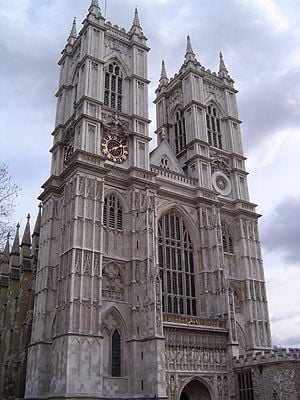
The Church of Scotland (known informally as The Kirk) is the national church of Scotland. It is Presbyterian in structure and Calvinist in theology and since 1921 has not been subject to state control. The British monarch is an ordinary member, although he or she is required to swear an oath to "defend the security" of the Church at their coronation. Splits in the Church since the Reformation have led to the creation of various other Presbyterian churches in Scotland including the Free Church of Scotland and the Free Presbyterian Church of Scotland.
In Wales, the Anglican Church in Wales was disestablished in 1920. The Anglican Church of Ireland was disestablished in the nineteenth century.
The Roman Catholic Church is the second largest denomination in the UK. After the Reformation, strict laws were passed against Catholics; some of these were removed by the Catholic Emancipation laws in the 1850s.
In Northern Ireland, the Catholic Church is the largest single denomination. The Presbyterian Church in Ireland is the largest Protestant denomination and is in terms of theology and history very closely linked to the Church of Scotland. Other large Christian groups are the Methodists and the Baptists.
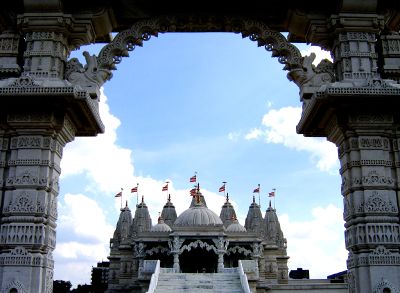
The Muslim population is significant, mostly living in cities and large towns including London, Birmingham, Bradford, and Oldham. Mosques are a common in some parts of Britain. The biggest groups of British Muslims are of Pakistani, Indian, and Bangladeshi origin. More recently, the wave of Somali and Middle-Eastern asylum seekers has increased Britain's Muslim population. A 2006 controversy over the burqa reflects a split between some Britons who are questioning the extent to which Islam is compatible with British society, and others who are happy with the widespread presence of Islam in Britain.
The religions of Indian origin, like Hinduism and Sikhism in Britain are also increasing in number.
Language
While the UK does not have an official language, the dominant language is English. This is a West Germanic language, descended from Old English, which features a large number of borrowings from Norman French and Latin. It has the largest vocabulary in the world. The other main indigenous languages are the Celtic languages of the British Isles. These fall into two groups: the P-Celtic languages (Welsh and the Cornish language); and the Q-Celtic languages (Irish and Scottish Gaelic).
The English language has spread to all corners of the world (primarily because of the British Empire as well as the dominant status of the USA) and is referred to as a "global language." Worldwide, it is taught as a second language more than any other. The United Kingdom's Celtic languages are also spoken by small groups around the globe, mainly Gaelic in Nova Scotia, Canada, and Welsh in Patagonia, Argentina.
Additional indigenous languages are Scots (which is closely related to English); and British Sign Language (Northern Ireland Sign Language is also used in Northern Ireland). Celtic dialectal influences from Cumbric persisted in Northern England for many centuries, most famously in a unique set of numbers used for counting sheep.
Immigrants, especially from the Commonwealth, speak many other languages, including Gujarati, Hindi, Punjabi, Urdu, Bengali, Cantonese, Turkish and Polish. The United Kingdom has the largest number of Hindi and Punjabi speakers outside Asia.
Men and women
The ideal of gender equality is widely shared, but inequality is evident in access to occupations by women and men, pay levels for similar kinds of work, and in the allocation of domestic tasks.
Marriage and the family
Historically most people in the United Kingdom lived in nuclear families. This reflected an economic landscape where the general populace tended to have less spending power, meaning that it was more practical to stick together rather than go their individual ways. This pattern also reflected gender roles. Men were expected to go out to work and women were expected to stay at home and look after the families.
In the twentieth century, the emancipation of women, the greater freedoms enjoyed by both men and women in the years following the Second World War, greater affluence and easier divorce have changed gender roles and living arrangements significantly. The trend is a rise in single people living alone and the decline of the nuclear family.
From the 1990s, the break-up of the traditional family unit, when combined with a low interest rate environment and other demographic changes, has created great pressure on the housing market, in particular regarding the accommodation of key workers such as nurses, other emergency service workers and teachers, who are priced out of most housing, especially in South East England.
Some research indicates that in the twenty-first century, young people are tending to continue to live in the parental home for much longer than their predecessors. The high cost of living, combined with rising cost of accommodation, further education and higher education means that many young people cannot afford to live independent lives from their families.
Premarital sex and unmarried cohabitation are widely accepted. However, single motherhood caused by unstable cohabiting relationships, or marital breakdown, or as a means of obtaining welfare, is seen as a significant social problem because of its costly drain on the welfare budget, and subsequent problems of child abuse, and juvenile delinquency, rather than as a moral question.
Education
The United Kingdom's high literacy rate of 99 percent is attributable to universal public education introduced for the primary level in 1870 and secondary level in 1900 (except in Scotland where it was introduced in 1696).
There are separate education systems in England, Northern Ireland, Scotland, and Wales. Education (although not necessarily in the form of school attendance) is compulsory for all children between the ages of five and 16. Most English, Welsh, and Northern Irish state (but not independent) schools usher students through nursery school, one of two primary school tracks, and one of two secondary tracks, of which sixth form is optional. About one-fifth of British students go on to post-secondary education (18+). Most children and young people in the UK are educated in state-funded schools financed through the tax system and so parents do not pay directly for the cost of education. Seven per cent of children go to independent fee paying schools. More than 50 percent of Oxbridge students come from the independent schools.
Education in England, Wales and Northern Ireland follows the national curriculum, which was introduced in 1988, which includes the core subjects English, mathematics, and science and religious education which is the only compulsory subject throughout a pupil's schooling. The foundation subjects: design and technology, information and communication technology (known as ICT), history, geography, modern foreign languages (MFL), music, art and design and the subjects of the basic curriculum, physical education, citizenship education. Welsh language is also a core subject in Wales. Scottish Gaelic may be taught to some pupils in Scotland. The Scottish curriculum has emphasized breadth across a range of subjects, while the English, Welsh and Northern Irish system has emphasized greater depth of education over a smaller range of subjects at secondary school level.
Class
Traditionally, British society has been stratified into several classes and sub-classes, with the highest occupied by the aristocratic inheritors of old, landed wealth. Those in the working class typically grow up in a family supported by wages earned in industrial or agricultural labor. Neither parent would have had a university education, and the family home would be rented. The working classes would often support the trade union movement and the Labour Party. A middle-class person has parents with white-collar jobs who are likely to have higher education, and own their suburban house. Education is seen as the key to advancement. They tend to support the Conservative Party, which stresses self-sufficiency and individualism. However, de-industrialization, increased social mobility, and the emergence of the knowledge economy have re-defined notions of class, so that numerous educated middle class people vote for the Labour Party.
Culture
Philosophy
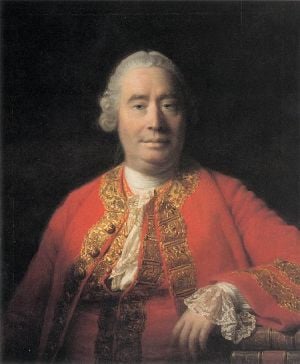
Philosophy in Britain has always tended towards nominalism, the idea that only individuals exist, rather than supra-individual universals, essences, or forms, and that universals are the products of abstraction from individuals by the human mind and have no extra-mental existence. This has contributed to the underlying skepticism of British philosophy and literature. Two prominent medieval nominalists were Duns Scotus (1266–1308) and William of Ockham (1288-1347). England and Scotland both had their own Enlightenments which differed very much from the French rationalist Enlightenment and German romantic Counter-Enlightenment. Modern Empiricism started in England with Francis Bacon (1561–1626), the founder of modern scientific method. It continued with Thomas Hobbes (1588–1679), England's most significant political philosopher, John Locke (1632–1704), who contributed to modern democratic theory, and the Irish Anglican divine George Berkeley (1685–1753). During this time England was also the scene of the fierce debate over deism. Scotland in the eighteenth century after the Act of Union underwent a flowering of intellectual life, and Edinburgh became known as the Athens of the North. It produced such luminaries as Francis Hutcheson (1694–1746), Adam Ferguson (1723-1816), Thomas Reid (1710–1796), Adam Smith (1723–1790) and David Hume (1711–1776). Together they produced the philosophical basis for modern liberal democracy and the free market.
A very influential philosophical movement that grew out of empiricism was the utilitarianism of Jeremy Bentham (1748–1832), John Stuart Mill (1806–1873) and Henry Sidgwick (1838 - 1900). They argued that maximizing happiness was the criterion for deciding what action one should take. This led Mill to argue strongly for individual liberty. Herbert Spencer (1820–1903) extended the philosophical theory of evolution. Twentieth century philosophy was dominated by analytic philosophy which put emphasis on clarity and argument, often achieved via modern formal logic and analysis of language, and a respect for the natural sciences. It was used by Bertrand Russell (1872–1970]] and G. E. Moore (1873–1958) and others to criticize the dominant idealism of Hegelianism. Associated with this were ordinary language philosophers such as John Austin (1911–1960), Gilbert Ryle (1900–1976), and the later Wittgenstein (1889–1951). This culminated in a low point in British philosophy with the sterile logical positivism of A. J. Ayer (1910–1989). Political philosophy continued to be liberal and generally critical of Marxism due to the influence of Michael Oakeshott (1901-1990) and émigrés Karl Popper (1902–1994) and F.A. Hayek (1899-1992).
Science
Britain's empirically minded culture supported scientific enquiry and discovery. Some of the leading scientists have been: John Napier (1550–1617) (logarithms), Robert Boyle (1627–1691) (chemistry), Robert Hooke (1635–1703) (elasticity), Isaac Newton (1643–1727) (gravity and calculus); James Hutton (1726-1797) (geology) Joseph Black (1728-1799) (thermodynamics), William Herschel (1738–1822) (astronomy), Edward Jenner (1749–1823) (vaccine), John Dalton (1766–1844) (chemistry), Humphry Davy (1778–1829) (chemical affinity), Charles Lyell (1797–1875) (geology), Michael Faraday (1791–1867) (electromagnetism), Charles Darwin (1809–1882) (evolution), James Prescott Joule (1818–1889) (heat energy) Lord Kelvin (1824–1907) (temperature), James Clerk Maxwell (1831–1879) (electromagnetism), J. J. Thomson (1856–1940) (electron), Ernest Rutherford (1871-1937) (nuclear physics), Alexander Fleming (1881–1955) (penicillin), Edgar Adrian (1889-1977) (neurons), Alan Turing (1912–1954) (computer science), Francis Crick (1916–2004) (DNA) and Stephen Hawking. By 2007, 85 Nobel Prizes in the sciences have been won by British scientists or scientists working in the UK. Twenty-six have been awarded to scientists from the Cavendish Laboratory in Cambridge University.
Some notable inventors have been: James Watt (1736–1819) (steam engine), William Sturgeon (1783-1850) (electromagnet), Charles Babbage (1791–1871) (programmable computer), Michael Faraday (1791–1867) (electrical generator), Charles Wheatstone (1802-1875) (wheatstone bridge), Robert Stephenson (1803–1859) (locomotive), Henry Bessemer (1813–1898) (steel), Harry Boot (1917–1983) (magnetron), John Boyd Dunlop (1822–1873) (pneumatic tyre), Joseph Swan (1828– 1914) (lightbulb), Alexander Graham Bell (1847-1922) (telephone), John Logie Baird (1888–1946) (television), Samuel Brown (internal combustion engine), Frank Whittle (1907–1996) (jet engine), Christopher Cockerell (1910–1999) (hovercraft), John Mallard (MRI scanner) and Tim Berners-Lee (World Wide Web)
Architecture
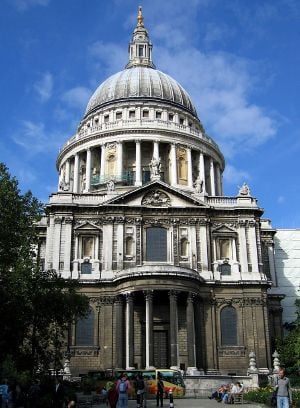
The earliest remnants of architecture in the United Kingdom are mainly Neolithic monuments such as Stonehenge and Avebury, and Roman ruins such as the spa in Bath. Many castles remain from the medieval period and in most towns and villages the parish church is an indication of the age of the settlement, built as they were from stone rather than the traditional wattle and daub.
Over the two centuries following the Norman conquest of 1066, and the building of the Tower of London, many great castles such as Caernarfon Castle in Wales and Carrickfergus Castle in Ireland were built to suppress the natives. Large houses continued to be fortified until the Tudor period.
The English Civil War (1642—1649) proved to be the last time in British history that houses had to survive a siege. After this houses were built purely for living, and design and appearance were for ever more important than defense.
Just prior to the Civil War, Inigo Jones, who is regarded as the first significant British architect, came to prominence. He was responsible for importing the Palladian manner of architecture to Britain from Italy; the Queen's House at Greenwich is perhaps his best surviving work.
Following the restoration of the monarchy in 1660 and the Great Fire of London in 1666 an opportunity was missed in London to create a new metropolitan city, featuring modern architectural styles. Although one of the best-known British architects, Sir Christopher Wren, was employed to design and rebuild many of the ruined ancient churches of London, his master plan for rebuilding London as a whole was rejected. It was in this period that he designed the building that he is perhaps best known for, Saint Paul's Cathedral.
In the early eighteenth century baroque architecture—popular in Europe—was introduced, and Blenheim Palace was built in this era. However, baroque was quickly replaced by a return of the Palladian form. The Georgian architecture of the eighteenth century was an evolved form of Palladianism. Many existing buildings such as Woburn Abbey and Kedleston Hall are in this style. Among the many architects of this form of architecture and its successors, neoclassicism and Romanticism, were Robert Adam, Sir William Chambers, and James Wyatt.
In the early nineteenth century the romantic medieval gothic style appeared as a backlash to the symmetry of Palladianism, and such buildings as Fonthill Abbey were built. By the middle of the nineteenth century, as a result of new technology, construction was able to develop incorporating steel as a building component; one of the greatest exponents of this was Joseph Paxton, architect of the Crystal Palace. Paxton also continued to build such houses as Mentmore Towers, in the still popular retrospective English Renaissance styles. In this era of prosperity and development British architecture embraced many new methods of construction, but ironically in style, such architects as August Pugin who designed the Houses of Parliament ensured it remained firmly in the past.
At the beginning of the twentieth century a new form of design—arts and crafts—became popular. The architectural form of this style, which had evolved from the nineteenth century designs of such architects as George Devey, was championed by Edwin Lutyens. Arts and crafts in architecture is symbolized by an informal, non-symmetrical form, often with mullioned or lattice windows, multiple gables and tall chimneys. This style continued to evolve until World War II.
Following the Second World War reconstruction went through a variety of phases, but was heavily influenced by Modernism, especially from the late 1950s to the early 1970s. Many bleak town center redevelopments—criticized for featuring hostile, concrete-lined "windswept plazas"—were the fruit of this interest, as were many equally bleak public buildings, such as the Hayward Gallery. Many Modernist-inspired town centers are today in the process of being redeveloped.
In the immediate post-war years, hundreds of thousands of council houses in vernacular style were built, giving working class people their first experience of private gardens and indoor sanitation.
Modernism remains a significant force in UK architecture, although its influence is felt predominantly in commercial buildings. The two most prominent proponents are Lord Rogers of Riverside and Lord Foster of Thames Bank. Rogers' iconic London buildings are probably Lloyd's Building and the Millennium Dome, while Foster created the Swiss Re Buildings (aka The Gherkin) and the City Hall (London).
The United Kingdom has one of the highest population densities in Europe. Housing tends to be smaller and more closely packed than in other countries, particularly compared to North America. The British have a particular affinity with the terraced house, dating back to the aftermath of the Great Fire of London. The majority of surviving housing built before 1914 is of this type, and consequently it dominates inner residential areas. In the twentieth century the process of suburbanization led to a spread of semi-detached and detached housing. In the aftermath of the Second World War, public housing was dramatically expanded to create a large number of council estates, although the majority of these have since been purchased by their tenants. Although there are some blocks of flats most English people prefer to live in houses with the result that many of these blocks built in the 1950s and 1960s are now being demolished. This is not the case in Scotland, where many more people live in this type of housing called tenements.
Art
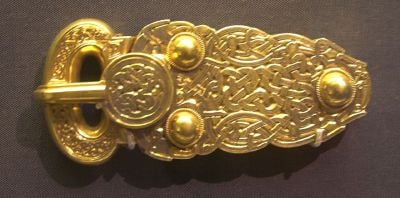
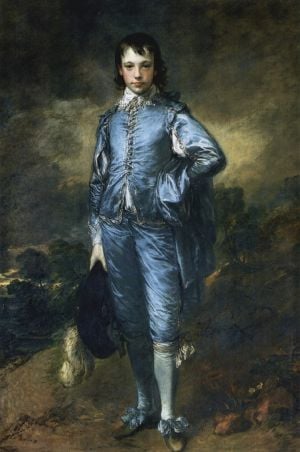
The oldest art in the United Kingdom can be dated to the Neolithic period, and is found in a funerary context. But it is in the Bronze Age that the first innovative artworks are found. The Beaker people, who arrived in Britain around 2500 B.C.E., were skilled in metal refining, working at first in copper, but later bronze and gold. The Wessex culture excelled in the making of gold ornaments. Works of art placed in graves or sacrificial pits have survived.
In the Iron Age, the Celts made gold ornaments, but stone and most likely wood was also used. This style continued into the Roman period, and would find a renaissance in the Medieval period. It also survived in the Celtic areas not occupied by the Romans, largely corresponding to the present-day Wales and Scotland.
The Romans, arriving in the first century B.C.E., brought with them the Classical style. Funerary monuments, statues and busts have survived. They also brought glasswork and mosaics. Christian art from the fourth century, has been preserved in mosaics with Christian symbols and pictures. Celtic and Scandinavian art have in common the use of intricate, intertwined patterns of decoration.
Anglo-Saxon fine art work was outstanding for its time as shown by the treasures from the seventh century burial site at Sutton Hoo. Celtic high crosses show the use of Celtic patterns in Christian art. Both were characterized by the use of curves and knots. Scenes from the Bible were depicted, framed with the ancient patterns. Some ancient symbols were redefined. Murals were painted on the white-chalked walls of stone churches, and stained glass was used in church and other windows.
Notable visual artists from the United Kingdom include John Constable, Joshua Reynolds, Thomas Gainsborough, William Blake and J.M.W. Turner. Twentieth century artists included Francis Bacon, David Hockney, Bridget Riley, and the pop artists Richard Hamilton and Peter Blake. Modern sculpture was pioneered by Jacob Epstein, Henry Moore and Barbara Hepworth. More recently, the so-called Young British Artists have gained some notoriety, particularly Damien Hirst and Tracey Emin. Notable illustrators include Aubrey Beardsley, Roger Hargreaves, and Beatrix Potter.
Cinema
The United Kingdom has been influential in the technological, commercial, and artistic development of cinema and probably second only to the USA in producing the greatest quantity of world-wide film stars. Despite a history of successful productions, the industry is characterized by an ongoing debate about its identity (including economic and cultural issues) and the influences of American and European cinema, although it is fair to say a brief "golden age" was enjoyed in the 1940s from the studios of J. Arthur Rank and Korda.
Modern cinema is generally regarded as descending from the work of the French Lumière brothers in 1892, and their show first came to London in 1896. However, the first moving pictures developed on celluloid film were made in Hyde Park, London in 1889 by William Friese Greene, a British inventor, who patented the process in 1890. The film is the first known instance of a projected moving image. The first people to build and run a working 35 mm camera in Britain were Robert W. Paul and Birt Acres. They made the first British film Incident at Clovelly Cottage in February 1895, shortly before falling out over the camera's patent.
Clothing
There is no specifically British national costume. Even individually, England, Wales and Northern Ireland have only vestiges of a national costume; Scotland has the kilt and Tam o'shanter. In England, certain military uniforms such as the Beefeater or the King's Guard are considered to be symbolic of Englishness, though they are not official national costumes. Morris dancers or the costumes for the traditional English May dance are cited by some as examples of traditional English costume.
This is in large part due to the critical role that British sensibilities have played in world clothing since the eighteenth century. Particularly during the Victorian era, British fashions defined acceptable dress for men of business. Key figures such as Beau Brummell, the future Edward VII and Edward VIII created the modern suit and cemented its dominance. As such, it could be argued that the national costume of the British male is a three-piece suit, necktie and bowler hat - an image regularly used by cartoonists as a caricature of Britishness.
Cuisine
Although there is ample evidence of a rich and varied approach to cuisine during earlier historical periods (particularly so among wealthy citizens), during much of the nineteenth and twentieth century Britain had a reputation for somewhat conservative cuisine. The stereotype of the native cuisine was of a diet progressing little beyond stodgy meals consisting of "meat and two veg." Even today, in more conservative areas of the country, "meat and veg" cuisine is still the favored choice at the dinner table.
Traditional British fare usually includes dishes such as fish and chips; roast dishes of beef, lamb, chicken and pork; both sweet and savory pies and puddings, as well as regional dishes such as the Cornish pasty and Lancashire Hotpot.
On January 8, 1940, four months after the outbreak of World War II, a system of food rationing was introduced to conserve stocks and feed the nation during the critical war years. Rationing persisted until July 4, 1954, when a 14-year period of relative privation (which profoundly affected a generation of people attitude to "a culture of food") finally came to an end. With the end of rationing, Britain's diet began to change, slowly at first during the 1950s and 1960s under the influence of such people as Elizabeth David, but immeasurably by the closing decades of the twentieth century.
Literature
English literature forms an important role in shaping and transmitting the national character. It tends to be humanistic and anti-utopian. The United Kingdom has produced many well known writers including: Geoffrey of Monmouth (1100-1145), Geoffrey Chaucer (1343-1400), Julian of Norwich (1342–1416), Thomas Malory (1405–1471), Edmund Spenser (1552-1599), Christopher Marlowe (1564-1593), Ben Johnson (1572-1637), John Milton (1608-1674), Jonathan Swift (1667-1745), Alexander Pope (1688-1744), John Bunyan (1628–1688), Samuel Pepys (1633–1703), Henry Fielding (1707–1754), Samuel Johnson (1709-1784), Oliver Goldsmith (1728–1774), Daniel Defoe (1659–1731), Walter Scott (1771–1832),Jane Austen (1775–1817), Mary Shelley (1797–1851), Elizabeth Gaskell (1810–1865), William Makepeace Thackeray (1811–1863), Charles Dickens (1812–1870), Wilkie Collins (1824–1889), Bram Stoker (1847–1912), Anthony Trollope (1815–1882), Charlotte Brontë (1816–1855), Emily Brontë (1818–1848), George Elliot (1819–1880), Samuel Butler (1835-1902), Thomas Hardy (1840-1928), Oscar Wilde (1854–1900), George Bernard Shaw (1856–1950), Joseph Conrad (1857-1924), Arthur Conan Doyle (1859–1930), H. G. Wells (1866–1946), Arnold Bennett (1867-1931), John Galsworthy (1867–1933), James Joyce (1882-1941), Virginia Woolf (1882-1941), D. H. Lawrence (1885-1930), Agatha Christie (1890-1976), J. R. R. Tolkien (1892-1973), Aldous Huxley (1894-1963), George Orwell (1903-1950), Graham Greene (1904-1991), Ian Fleming (1908-1964), William Golding (1911-1993), Muriel Spark (1918–2006), Doris Lessing (1919-), V. S. Naipaul (1932-). Eleven Britons have been awarded the Nobel Prize for literature.
Well known children's authors include Charles Kingsley (1819–1875), Robert Louis Stevenson (1850-1884)], Joseph Jacobs (1854-1916), J. M. Barrie (1860-1937), Rudyard Kipling (1865-1936), Beatrix Potter (1866-1943), A. A. Milne (1882–1956), Enid Blyton (1897-1968), C.S. Lewis (1898-1963), Lewis Carroll (1832-1898), Roald Dahl (1916–1990), J. K. Rowling and Philip Pullman.
Significant poets include: William Shakespeare, John Donne (1572-1631), George Herbert (1593–1633), John Milton (1608-1674), Thomas Gray (1716–1771), William Cowper (1731–1800) William Blake (1757-1827), Robert Burns (1759–1796), William Wordsworth (1770-1850), Samuel Taylor Coleridge (1772-1834), Lord Byron (1788-1824), Percy Bysshe Shelley (1792-1822), John Keats (1795- 1821), Elizabeth Barrett Browning (1806–1861), Alfred, Lord Tennyson (1809-1892), Edward Lear (1812–1888), Matthew Arnold (1822–1888), Christina Rossetti (1830–1894), Gerald Manley Hopkins (1844-1889), William Butler Yeats (1865-1939), Siegfried Sassoon (1886–1967), T. S. Eliot (1888-1965), R. S. Thomas (1913-2000), Wilfred Owen (1893-1918), John Betjeman (1906-1984), Philip Larkin (1922-1995), W. H. Auden (1907-1973), Dylan Thomas (1924-1953), and Ted Hughes (1930-1988).
Media
The UK has a virtually unrivaled number of media outlets. It has four quality national newspapers with quite different editorial perspectives as well as many other national and local papers and magazines. The prominence of the English language gives it a widespread international dimension.
The BBC is the UK's publicly-funded radio and television broadcasting corporation, and is the oldest broadcaster in the world. Funded by a compulsory television license, the BBC operates several television networks and radio stations both in the UK and abroad. The BBC's international television news service, BBC World, is broadcast throughout the world and the BBC World Service radio network is broadcast in 33 languages globally. Most digital cable television services are provided by NTL:Telewest, and free-to-air digital terrestrial television by Freeview.
Music
Composers from the UK have not achieved recognition as broad as that earned by their literary counterparts, and, particularly during the nineteenth century, were overshadowed in international reputation by other European composers; however, many works of earlier composers such as Thomas Tallis, William Byrd, and Henry Purcell (1659–1695) and George Frideric Handel (1685–1759) who composed The Messiah are still frequently performed throughout the world today. A revival of England's musical status began during the twentieth century with the prominence of composers such as Edward Elgar (1857-1934), Gustav Holst (1874-1934), William Walton (1902-1983), Ralph Vaughan Williams (1872-1958), Frederick Delius (1862-1934) and Benjamin Britten (1913-1976).
The UK was, with the U.S., one of the two main contributors in the development of rock and roll, and the UK has provided some of the world's most famous rock bands including The Beatles, Led Zeppelin, Queen, Deep Purple, The Who, Pink Floyd, Emerson, Lake & Palmer, Yes, Genesis, Black Sabbath and The Rolling Stones. The UK was at the forefront of punk rock with bands like The Sex Pistols and The Clash, music in the 1970s as well as the being the birthplace of many musical genres and movements such as hard rock, British invasion, heavy metal, Britpop, glam rock, drum and bass, progressive rock, punk rock, gothic rock, shoegazing, acid house, UK garage, Trip Hop and Dubstep.
Theater
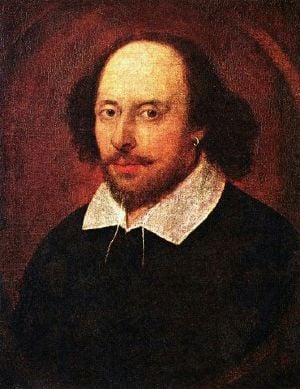
Theater was introduced to the UK from Europe by the Romans who built auditoriums across the country. By the medieval period theater had developed with the mummers' plays, a form of early street theater associated with the Morris dance, concentrating on themes such as Saint George and the Dragon, and Robin Hood. These were folk tales re-telling old stories, and the actors traveled from town to town performing for their audiences in return for money and hospitality. The medieval mystery plays and morality plays, which dealt with Christian themes, were performed at religious festivals.
The reign of Elizabeth I in the late sixteenth century and early seventeenth century saw a flowering of the drama and all the arts. The most famous playwright in the world, William Shakespeare, wrote around 40 plays that are still performed in theaters across the world. They include tragedies, such as Hamlet (1603), Othello (1604), and King Lear (1605); comedies, such as A Midsummer Night's Dream (1594—1596) and Twelfth Night (1602); and history plays, such as Henry IV, part 1—2. The Elizabethan age is sometimes nicknamed "the age of Shakespeare" for the amount of influence he held over the era. Other important Elizabethan and seventeenth-century playwrights include Ben Jonson, Christopher Marlowe, John Gay and John Webster.
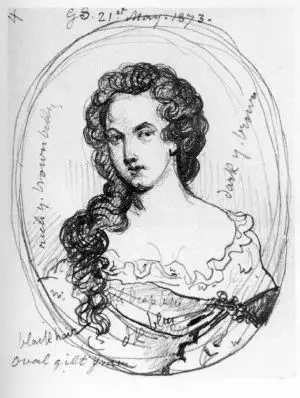
During the Interregnum (1642—1660), English theaters were kept closed by the Puritans for religious and ideological reasons. When the London theaters opened again with the Restoration of the monarchy in 1660, they flourished under the personal interest and support of Charles II. Wide and socially mixed audiences were attracted by topical writing and by the introduction of the first professional actresses (in Shakespeare's time, all female roles had been played by boys). New genres of the Restoration were heroic drama, pathetic drama, and Restoration comedy. The Restoration plays that have best retained the interest of producers and audiences today are the comedies, such as William Wycherley's The Country Wife (1676), The Rover (1677) by the first professional woman playwright, Aphra Behn, John Vanbrugh's The Relapse (1696), and William Congreve's The Way of the World (1700). Restoration comedy is famous or notorious for its sexual explicitness, a quality encouraged by Charles II (1660–1685) personally and by the rakish aristocratic ethos of his court.
In the eighteenth century, the highbrow and provocative Restoration comedy lost favor, to be replaced by sentimental comedy, domestic tragedy such as George Lillo's The London Merchant (1731), and by an overwhelming interest in Italian opera. Popular entertainment became more important in this period than ever before, with fair-booth burlesque and mixed forms that are the ancestors of the English music hall. The greatest actor/playwright of this age was David Garrick (1717–1779). He revived many plays including those of Shakespeare. By the early nineteenth century it was no longer represented by stage plays at all, but by the closet drama, plays written to be privately read in a "closet" (a small domestic room). The well known duo Gilbert (1836–1911) and Sullivan (1842–1900) produced many comic operas such as H.M.S. Pinafore, The Pirates of Penzance and The Mikado.
A change came in the late nineteenth century with the plays on the London stage by the Irishmen George Bernard Shaw and Oscar Wilde and the Norwegian Henrik Ibsen, Noël Coward (1899–1973) all of whom influenced domestic English drama and revitalized it. Contemporary playwrights include Robert Bolt (1924-1995), Harold Pinter (b. 1930) and Tom Stoppard (b. 1937).
The West End of London has a large number of theatres, particularly centred around Shaftesbury Avenue. A prolific composer of the twentieth century, Andrew Lloyd Webber, has dominated the West End for a number of years and his musicals have travelled to Broadway in New York and around the world, as well as being turned into films.
The Royal Shakespeare Company operates out of Shakespeare's birthplace Stratford-upon-Avon in England, producing mainly but not exclusively Shakespeare's plays.
Sport
The most popular participant pastime in Britain is fishing. A number of major sports originated in the United Kingdom, including football (known as soccer in North America and Australia), rugby football (rugger), hockey, squash, golf, cricket, tennis and boxing. Football is the most popular spectator sport. The home nations compete in international competitions individually as England, Scotland, Wales and Northern Ireland. It is because of this tradition that the Great Britain does not compete in football events at the Olympic Games. Rugby football differs internationally to association football, as the England, Scotland, Wales, and Ireland (including Northern Ireland) teams do come together to form the British and Irish Lions, as well as competing separately.
The UK is home to many world-renowned football clubs, such as Chelsea, Manchester United, Liverpool, and Arsenal in England, and Celtic and Rangers in Scotland. Clubs compete in national leagues and competitions and some go on to compete in European competitions. British teams are often successful in European Competitions and several have become European Cup/UEFA Champions League winners: Liverpool (five times), Manchester United (twice), Nottingham Forest (twice), Aston Villa and Celtic. England won the Football World Cup in 1966.
Cricket was created in England and is one of the oldest sports in the world that is still played today. Far more people play cricket than football as every village in the country has a team. There are county leagues but most just support the national team. As with football there is no UK team. There is only an England side but many Welsh and Scottish players have played for England. Major English cricket grounds include Lords, The Oval, Headingly, Old Trafford, Edgbaston and Trent Bridge.
Rugby Union is played predominantly in Wales, Northern Ireland and Southern England. It originated with the actions of a Rugby School boy called William Webb Ellis, who picked up the ball in a game of football and ran with it. It is considered to be the national sport of Wales. England won the Rugby World Cup in 2003. Every four years the British and Irish Lions tour either Australia, New Zealand or South Africa. Whereas Rugby Union is an amateur game, Rugby league is a professional version of rugby that is generally played in the North of England.
UK's most successful sport, if judged by the number of recent wins in the international arena, is rowing which holds a strong presence amongst other rowing nations such as Australia, Canada and Germany. The UK's most successful sportsman currently is Steven Redgrave who won five gold and one bronze medals at five consecutive Olympic Games as well as numerous wins at the World Rowing Championships and Henley Royal Regatta.
The Wimbledon Championships are international tennis events held in Wimbledon in south London every summer and are seen as the most prestigious of the tennis calendar.
Thoroughbred racing started with Charles II of England as the "Sport of Kings" and is a royal pastime to this day. World-famous horse races include the Grand National and the Epsom Derby.
Golf is one of the most popular participation sports played in the UK, and St Andrews in Scotland is the sport's home course. Shinty or camanachd (a sport derived from the same root as the Irish hurling and similar to bandy) is popular in the Scottish Highlands, sometimes attracting crowds numbering thousands in the most sparsely populated region of the UK.
Many teams and drivers in Formula One and the World Rally Championship are based in the UK. The country also hosts legs of the Formula One and World Rallying Championship calendars and has its own Touring Car Racing championship, the BTCC. British Formula One world champions include Mike Hawthorn, Graham Hill (twice), Jim Clark (twice), John Surtees (who was also successful on motorcycles), Jackie Stewart (three times), James Hunt, Nigel Mansell, and Graham Hill's son, Damon Hill. British drivers have not been as successful in the World Rally championship, with only Colin McRae and the late Richard Burns winning the title.
Symbols
- The flag of the United Kingdom is the Union Flag (commonly known as the "Union Jack," though this is technically only correct when at sea). Created from the superimposition of the flags of England (St George's Cross) and Scotland (Saint Andrew's Cross); the Saint Patrick's cross, representing Ireland, was added to this in 1801.
- Britannia is a personification of Britain, originating from the Roman occupation of southern and central Great Britain. Britannia is symbolized as a young woman with brown or golden hair, wearing a Corinthian helmet and white robes. She holds Poseidon's three-pronged trident and a shield, bearing the Union Flag. Sometimes she is depicted as riding the back of a lion. In modern usage, Britannia is often associated with maritime dominance, as in the patriotic song Rule Britannia.
- The lion has also been used as a symbol of England; one is depicted behind Britannia on the 50p piece and one is shown crowned on the back of the 10p piece, it is also used as a symbol on the non-ceremonial flag of the British Army. Lions have been used as heraldic devices many times, including in the royal arms of both the kingdoms of England, Scotland and Kingdom of Gwynedd in Wales. The lion is featured on the emblem of the England national football team, giving rise to the popular football anthem Three Lions.
- The bulldog is sometimes used as a symbol of Great Britain.
- Britain (especially England) is also personified as the character John Bull.
Notes
- ↑ No law was passed making God Save the King the official anthem. In the British tradition, such laws are not necessary; proclamation and usage are sufficient to make it the official national anthem. God Save the King also serves as the Royal anthem for several other countries.
- ↑ Under the Council of Europe's European Charter for Regional or Minority Languages, the Welsh, Scottish Gaelic, Cornish, Irish, Scots, and its regional variant Ulster Scots are officially recognized as Regional or Minority languages by the UK Government for the purposes of the Charter.
- ↑ CIA, United Kingdom - People and Society The World Factbook. Retrieved July 5, 2024.
- ↑ Scotland held its census a year later after England, Wales and Northern Ireland due to the COVID-19 pandemic. As a result, the data shown is from two separate years.
- ↑ Population and household estimates, England and Wales: Census 2021, unrounded data Office for National Statistics. Retrieved July 5, 2024.
- ↑ 2021 Census Northern Ireland Northern Ireland Statistics and Research Agency. Retrieved July 5, 2024.
- ↑ Scotland Quality Assurance report – Unrounded population estimates and ethnic group, national identity, language and religion topic data Scotland's Census. Retrieved July 5, 2024.
- ↑ 8.0 8.1 8.2 8.3 World Economic Outlook Database: United Kingdom International Monetary Fund, April, 2024. Retrieved July 5, 2024.
- ↑ Income inequality OECD Data. Retrieved July 5, 2024.
- ↑ British dependencies drive on the left except for BIOT and Gibraltar.
- ↑ ISO 3166-1 alpha-2 states that this should be GB and .gb was initially used by the Government, but registration has been suppressed in favor of .uk.
- ↑ Lawrence James, The Rise and Fall of the British Empire (Abacus, 2001, ISBN 031216985X), 152.
- ↑ 13.0 13.1 Niall Ferguson, Empire, The rise and demise of the British world order and the lessons for global power (New York: Basic Books, 2004, ISBN 0465023282).
- ↑ Anthony Pagden, The Origins of Empire (The Oxford History of the British Empire) edited by Nicholas Canny, (Oxford University Press, 1998), 92.
- ↑ Ronald Hyam, Britain's Imperial Century, 1815-1914: A Study of Empire and Expansion (Palgrave Macmillan, 2002, ISBN 033399311X), 1.
- ↑ Simon Smith, British Imperialism 1750-1970 (Cambridge University Press, 1998, ISBN 052159930X), 71.
- ↑ Timothy Parsons, The British Imperial Century, 1815-1914: A World History Perspective (Rowman & Littlefield, 1999, ISBN 0847688259), 3.
- ↑ 18.0 18.1 Andrew Porter, The Nineteenth Century, The Oxford History of the British Empire (Oxford University Press, 1998, ISBN 978-0199246786), 401.
- ↑ Paul Johnson, The Birth of the Modern (London: Weidenfeld, 1991, ISBN 0060922826), 772-777.
- ↑ Lisa Agnew, Cheddar Gorge and Wookey Hole: Home of Spooks, Cannibals and Witches TimeTravel-Britain.. Retrieved July 5, 2024.
ReferencesISBN links support NWE through referral fees
- Boyce, David George. The Irish Question and British Politics, 1868-1996. (British history in perspective.) Houndmills, Basingstoke, Hampshire: Macmillan Press, 1996. ISBN 978-0312161064
- Canny, Nicholas (ed.). The Oxford History of the British Empire: Volume I: The Origins of Empire: British Overseas Enterprise to the Close of the Seventeenth Century. Oxford University Press, 2001. ISBN 0199246769
- Davies, Norman. The Isles: A History. London: Macmillan, 1999. ISBN 0333692837
- Ferguson, Niall. Empire: The Rise and Demise of the British World Order. Basic Books, 2003. ISBN 0465023282
- Goldthorpe, John H., Catriona Llewellyn, and Clive Payne. Social mobility and class structure in modern Britain. Oxford: Clarendon Press, 1980. ISBN 978-0198272472
- Hyam, Ronald. Britain's Imperial Century, 1815-1914: A Study of Empire and Expansion, third ed. (original 1993) Palgrave Macmillan, 2002. ISBN 033399311X
- James, Lawrence. The Rise and Fall of the British Empire. St. Martin's Griffin, (original 1996) 2001. ISBN 031216985X
- Johnson, Paul. The Birth of the Modern: World Society 1815-1830 . London: Weidenfeld; HarperPerennial, 1991. ISBN 0060922826
- Macfarlane, Alan. The Culture of Capitalism. Oxford, UK: Blackwell, 1987. ISBN 978-0631136262
- Macfarlane, Alan. The Origins of English Individualism: The family, property, and social transition. New York: Cambridge University Press, 1979. ISBN 978-0521295703
- Parsons, Timothy. The British Imperial Century, 1815-1914. (A World History Perspective) Rowman & Littlefield, 1999. ISBN 0847688259
- Porter, Andrew. The Nineteenth Century, The Oxford History of the British Empire. Oxford University Press, 2001. ISBN 978-0199246786
- Sampson, Anthony. The Changing Anatomy of Britain. New York: Random House, 1982. ISBN 978-0394531434
- Smith, Simon. British Imperialism 1750-1970. Cambridge University Press, 1998. ISBN 052159930X
External links
All links retrieved May 3, 2023.
- United Kingdom The World Fact Book
- United Kingdom Countries and Their Cultures
- United Kingdom Country Profile BBC
- United Kingdom Government Gov.uk
Credits
New World Encyclopedia writers and editors rewrote and completed the Wikipedia article in accordance with New World Encyclopedia standards. This article abides by terms of the Creative Commons CC-by-sa 3.0 License (CC-by-sa), which may be used and disseminated with proper attribution. Credit is due under the terms of this license that can reference both the New World Encyclopedia contributors and the selfless volunteer contributors of the Wikimedia Foundation. To cite this article click here for a list of acceptable citing formats.The history of earlier contributions by wikipedians is accessible to researchers here:
- United_Kingdom history
- Geography_of_the_UK history
- London history
- Economy_of_the_United_Kingdom history
- Demography_of_the_United_Kingdom history
- Education_in_the_United_Kingdom history
- Cinema_of_the_United_Kingdom history
- History_of_the_United_Kingdom history
- Settlement_of_Great_Britain_and_Ireland history
- Culture_of_the_United_Kingdom history
- Norman_conquest_of_England history
- History_of_England history
- British_Empire history
- Industrial_Revolution history
- World_War_I history
- World_War_II history
The history of this article since it was imported to New World Encyclopedia:
Note: Some restrictions may apply to use of individual images which are separately licensed.


